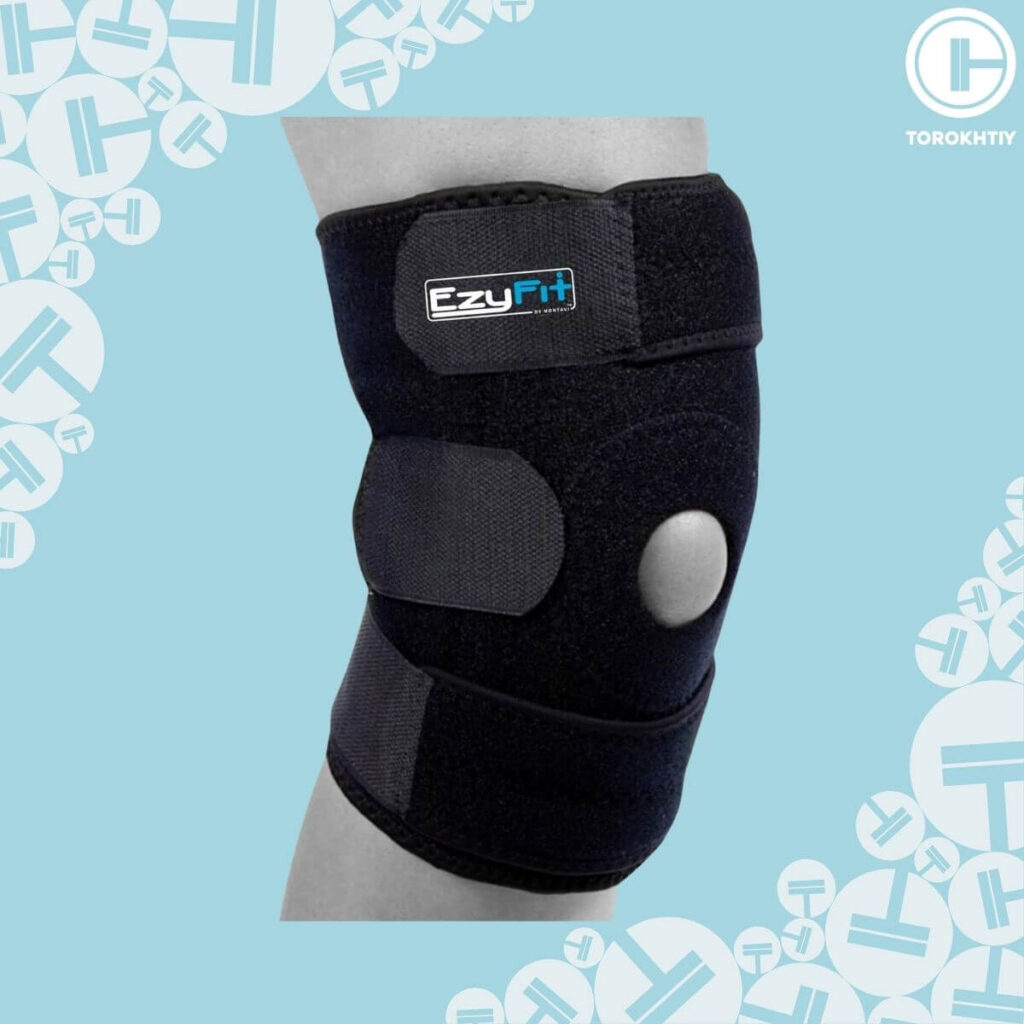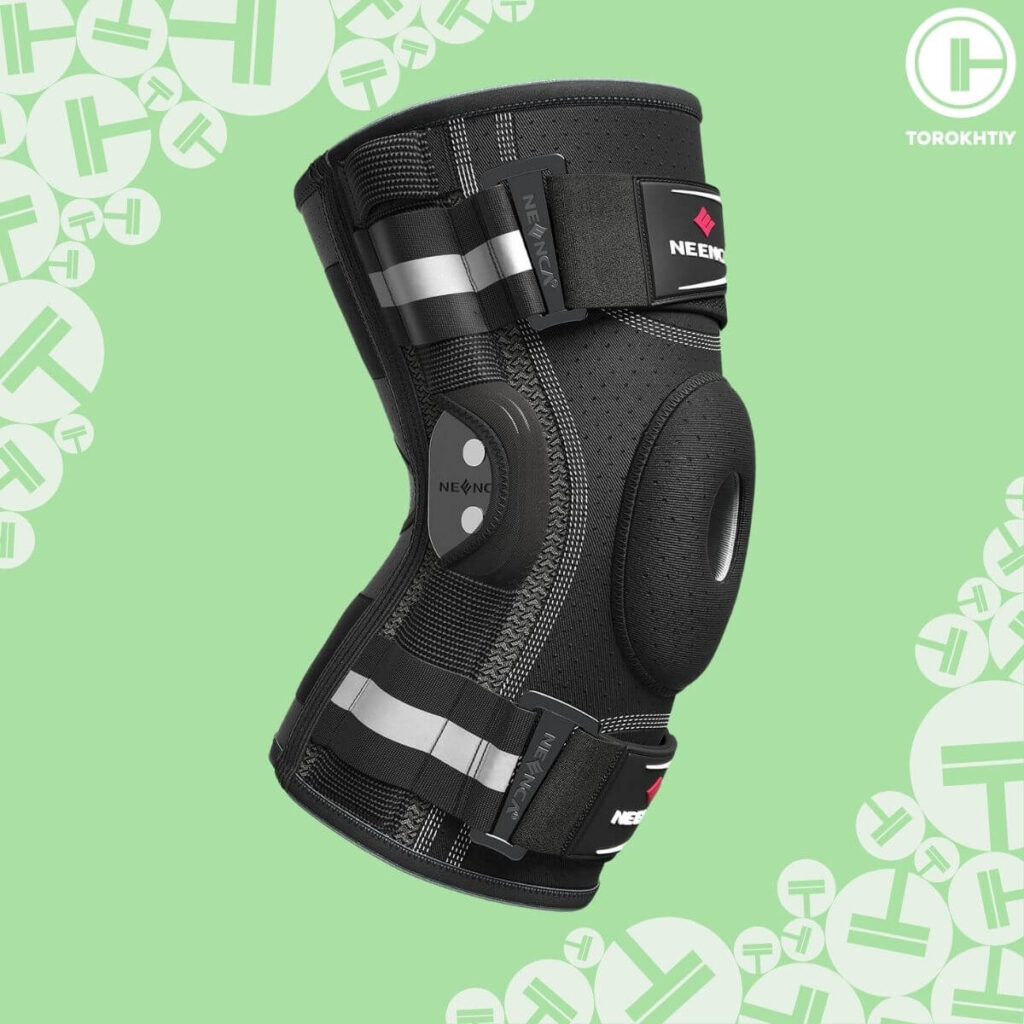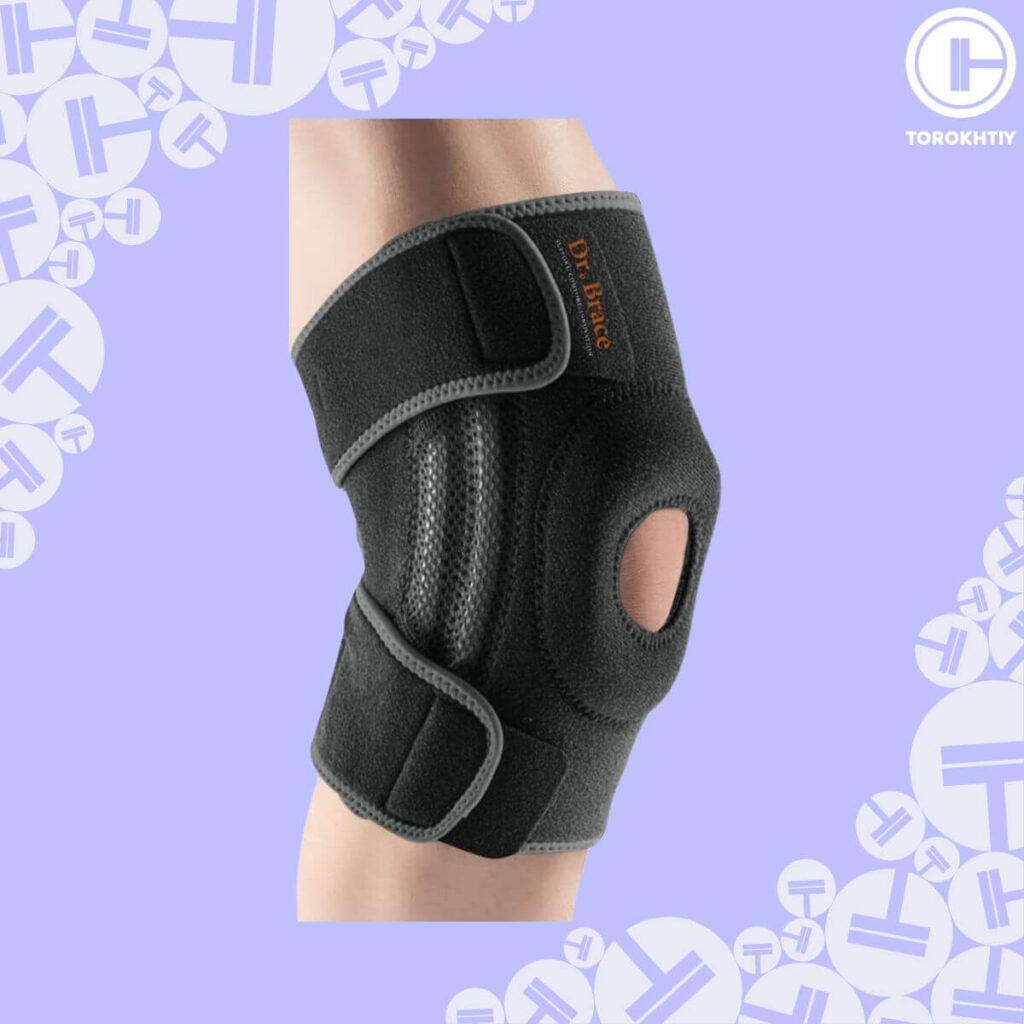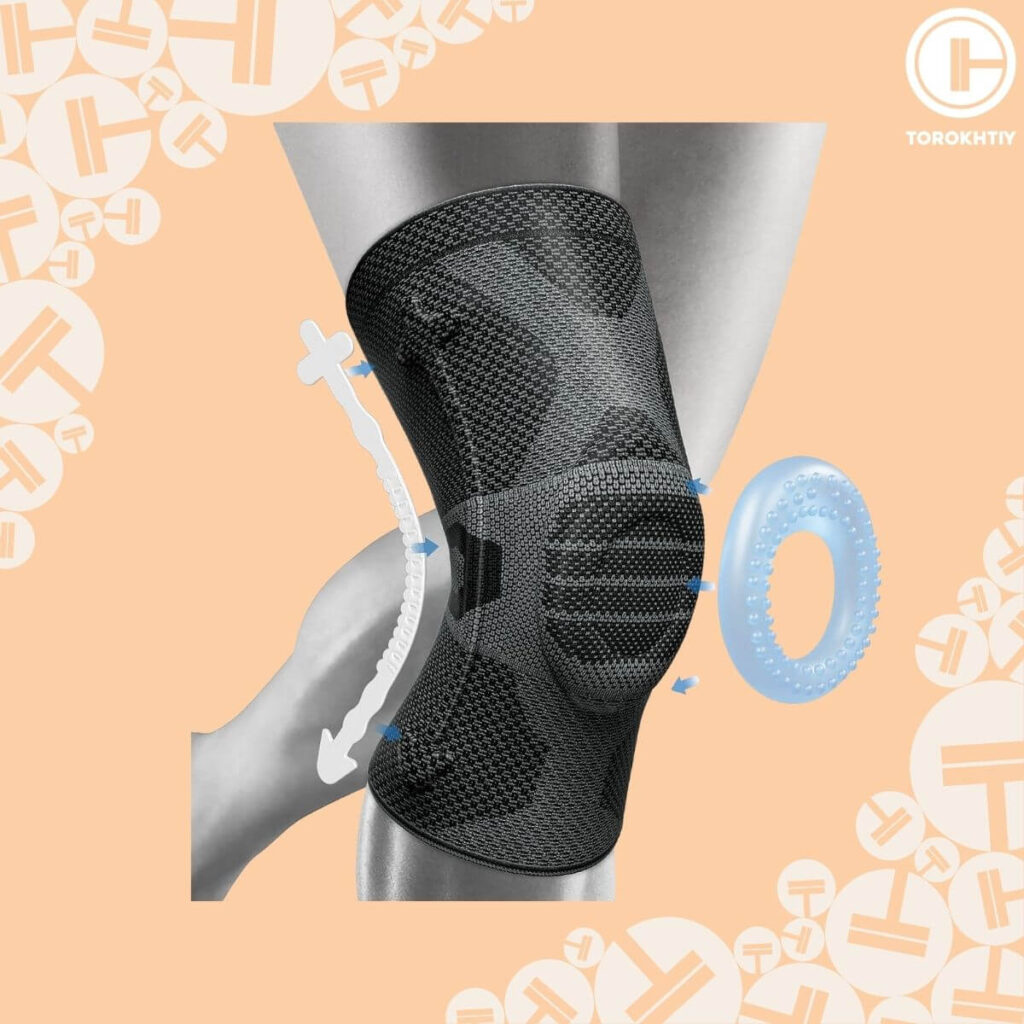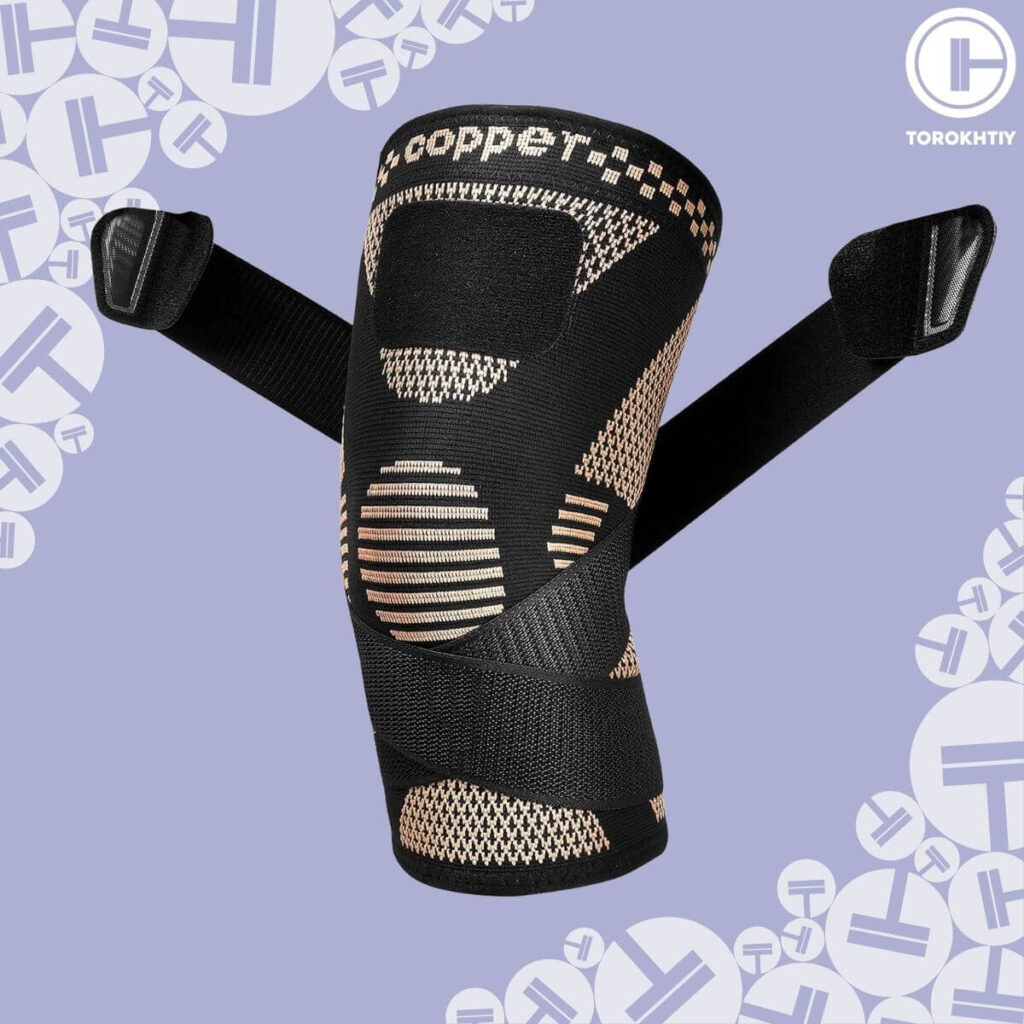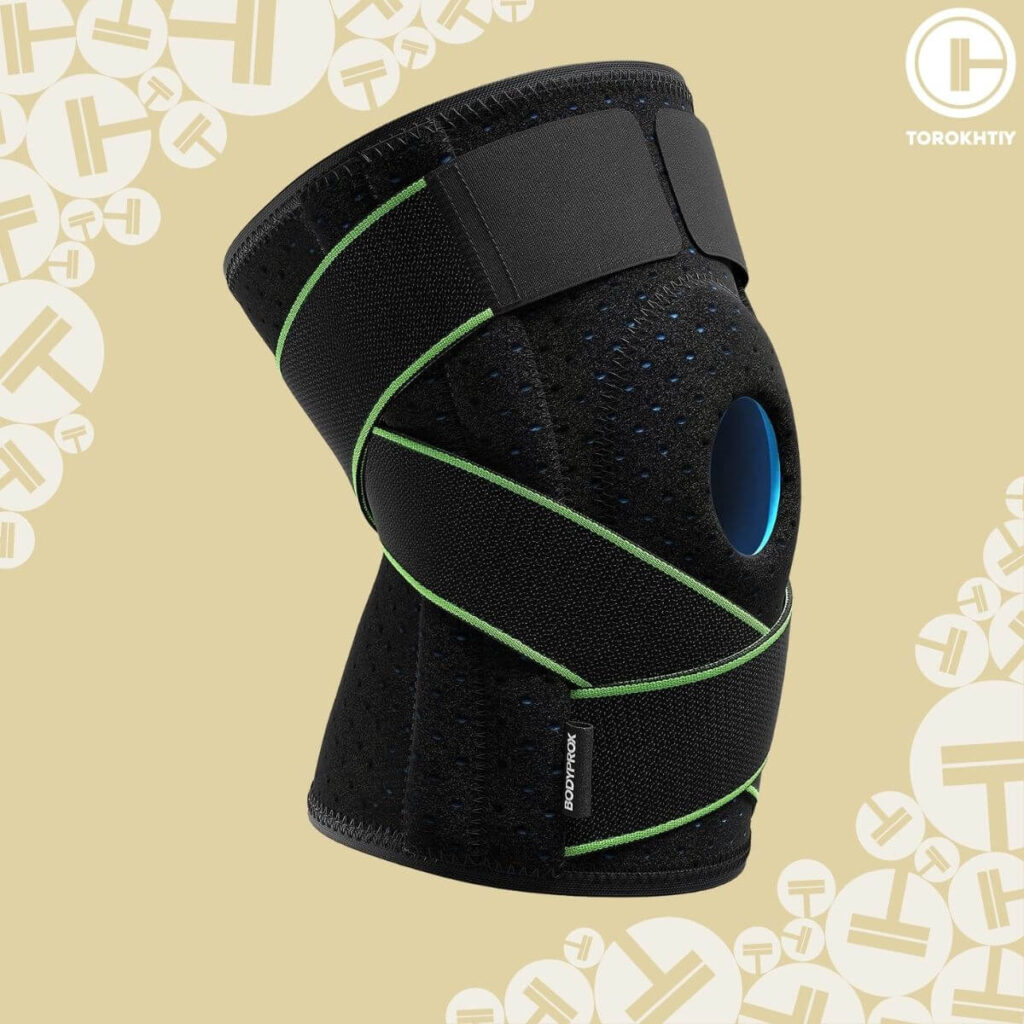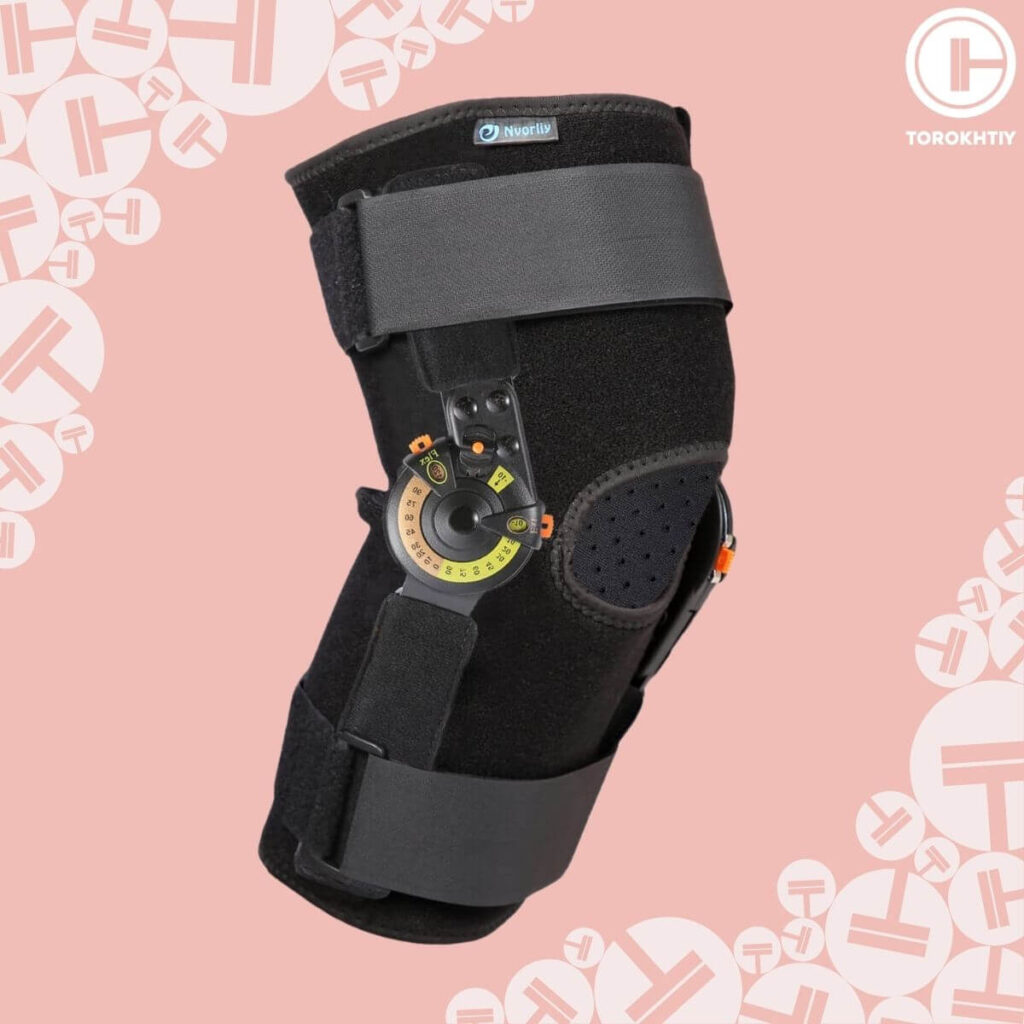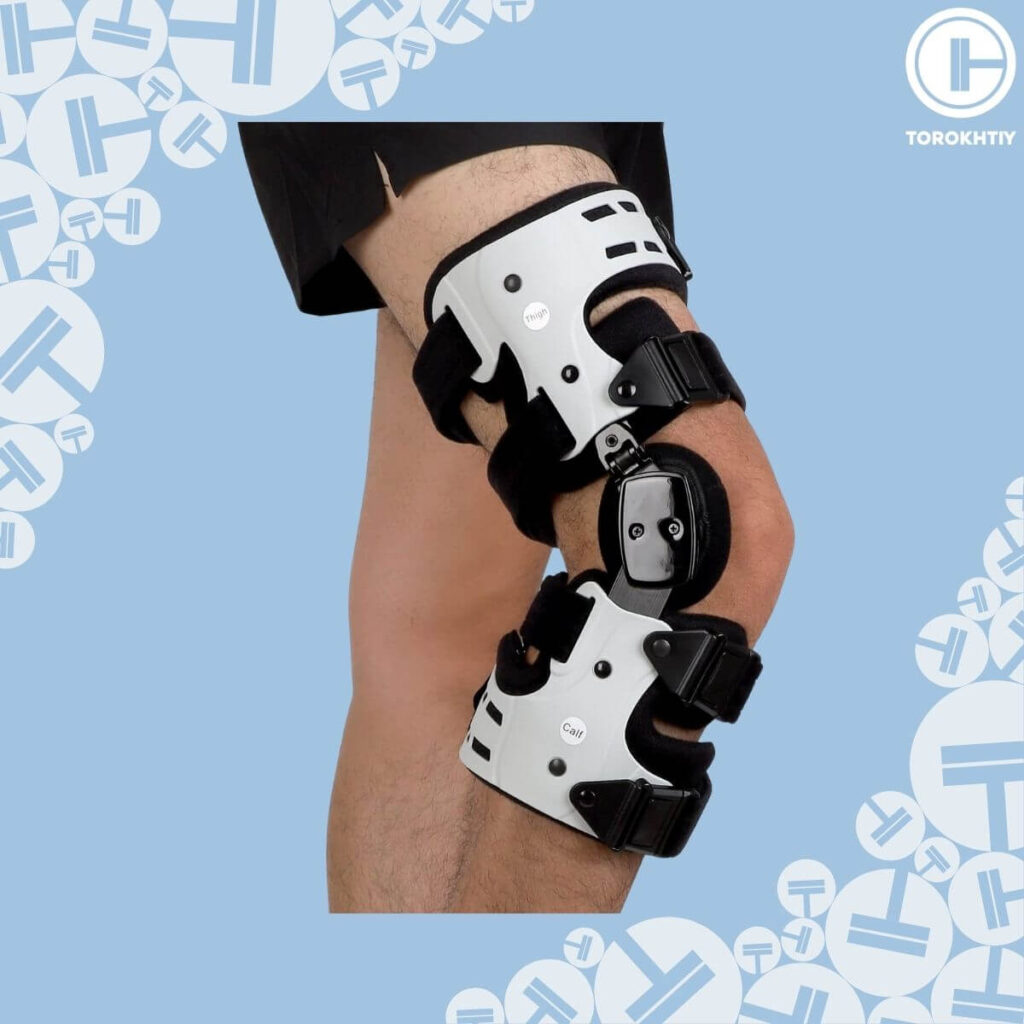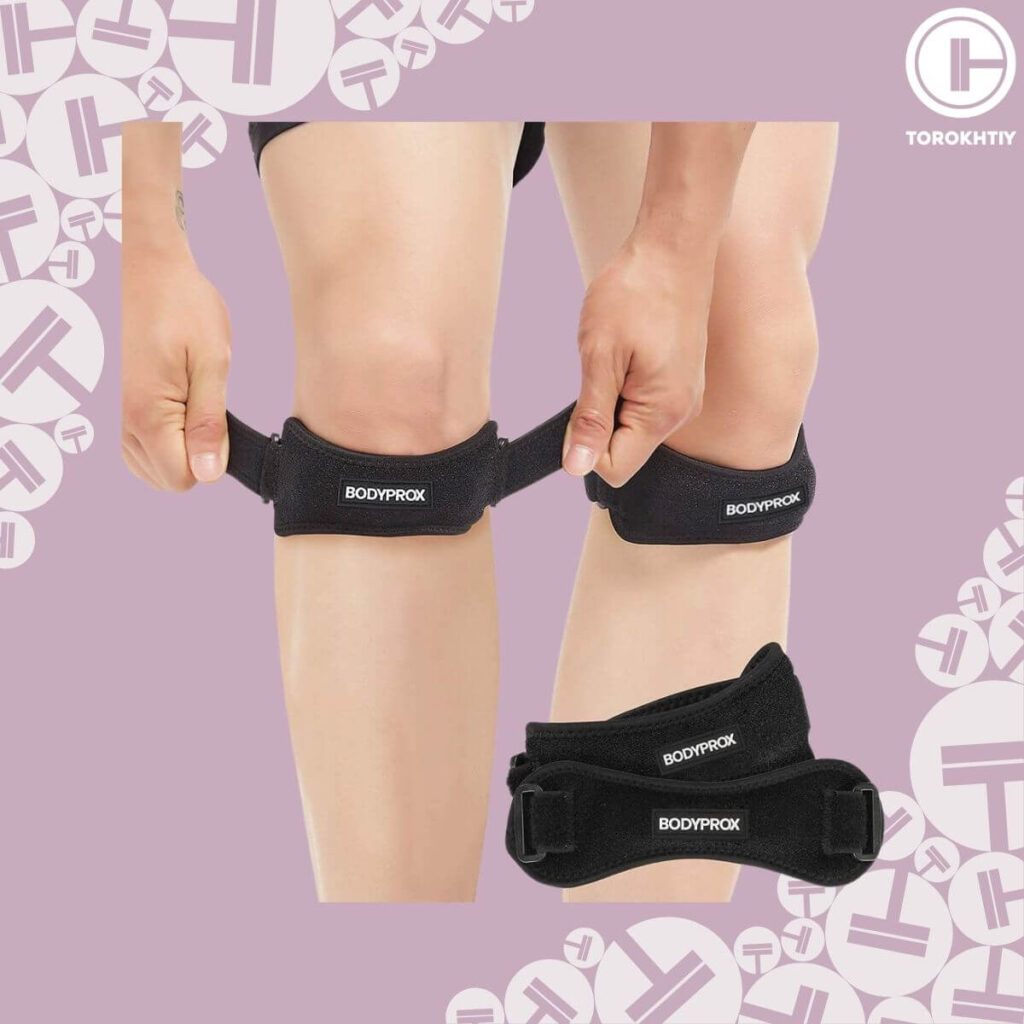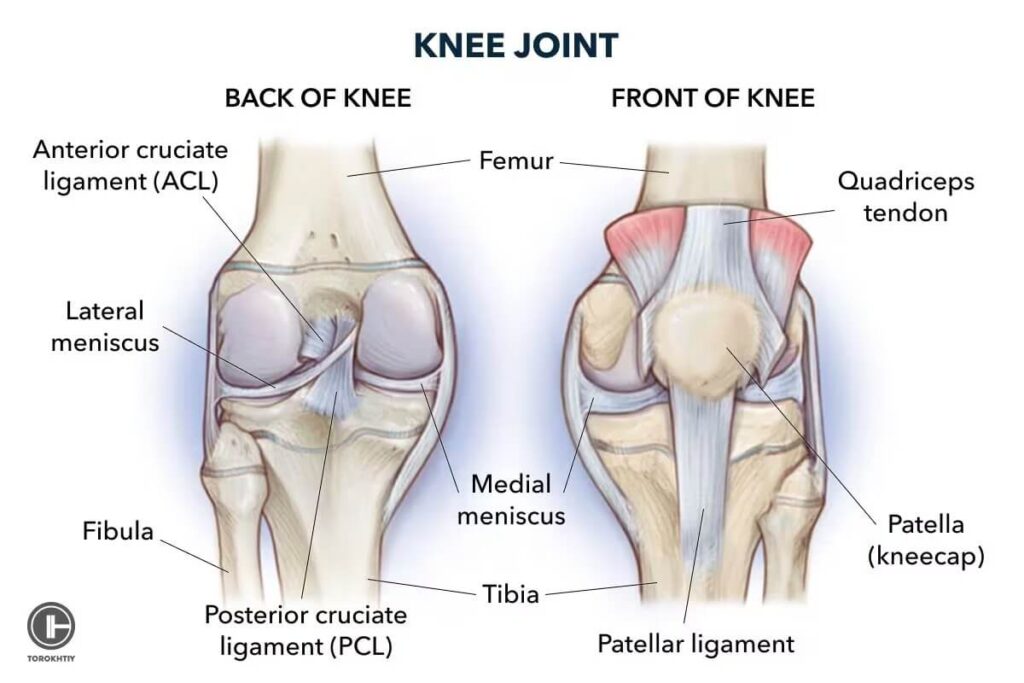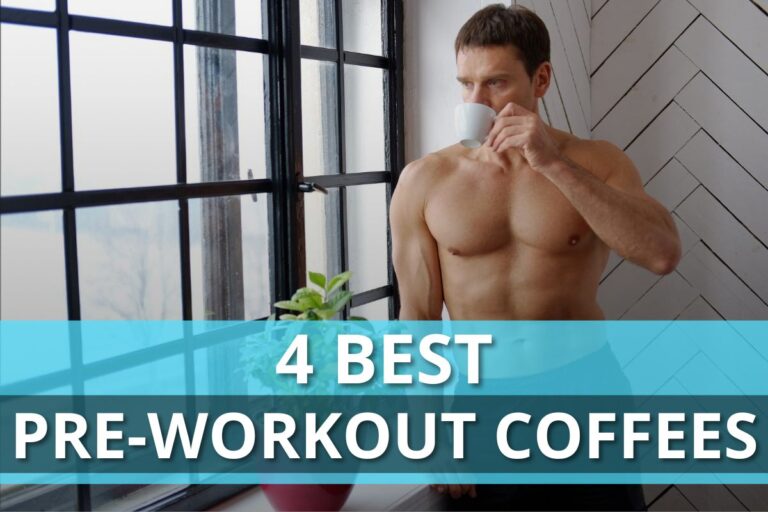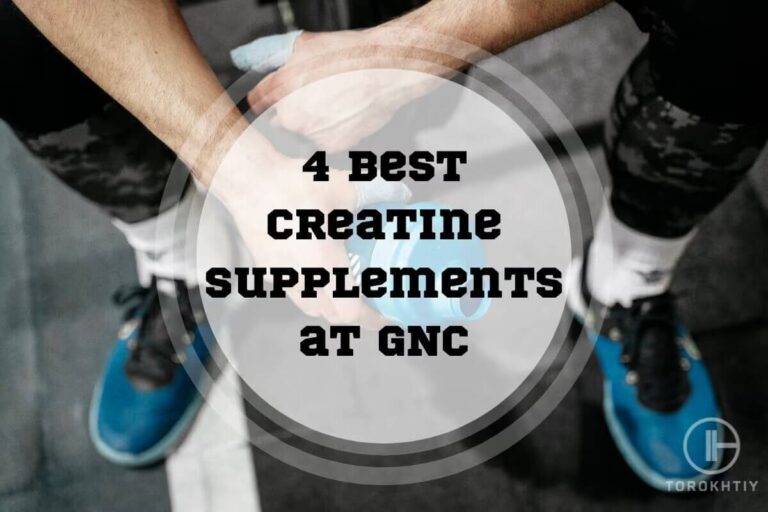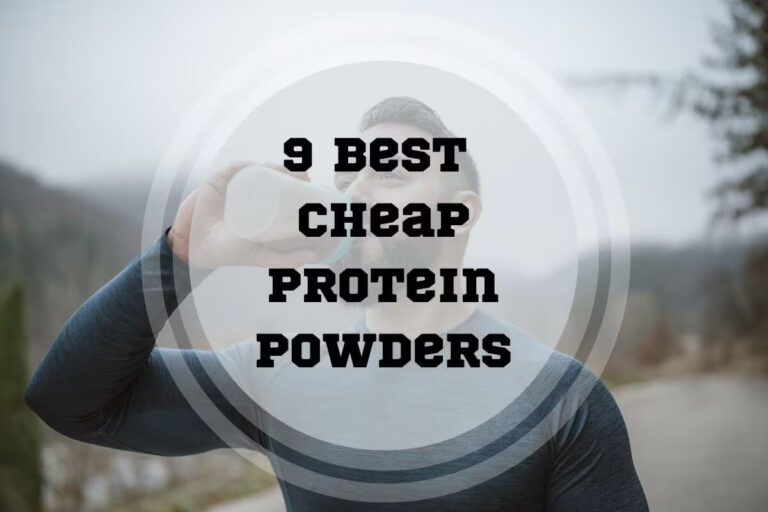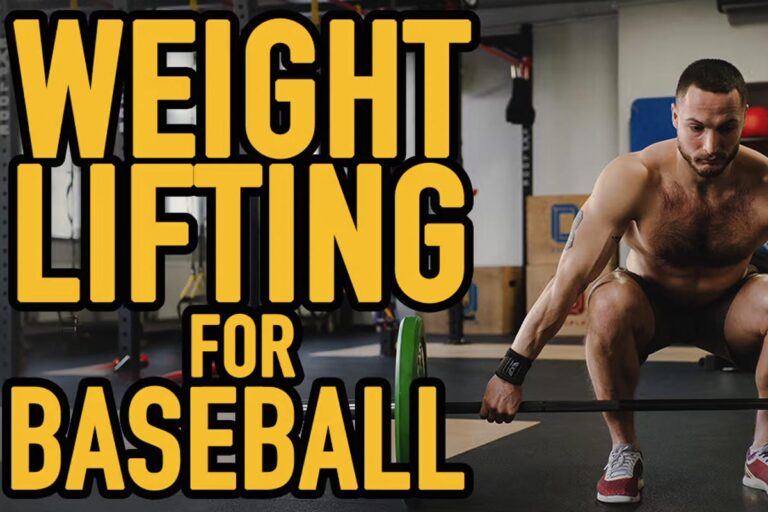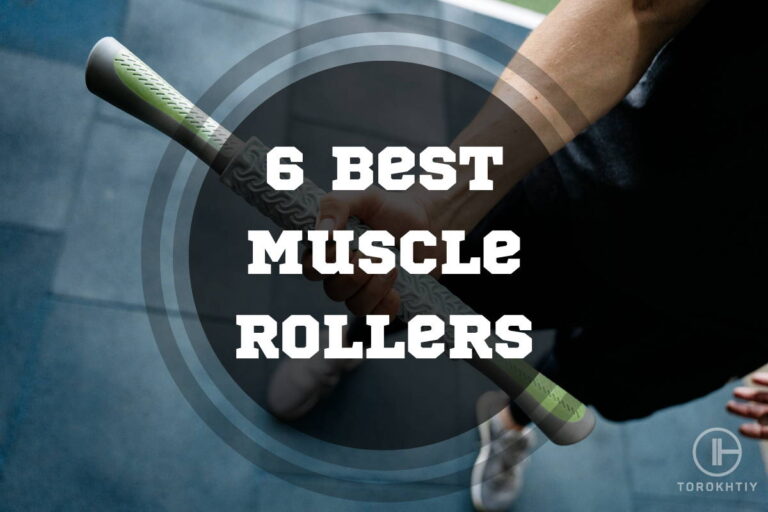9 Best Knee Braces in 2025
Reviewed by: Oleksiy Torokhtiy (21 years of Oly Lifting experience)
Knee braces provide stability and support to the knee joint and surrounding structures, with new functional designs being developed. Whether you’re looking for help with rehabilitation, better pain management, or performance improvements, knee braces can prove a vital aid.
We’ve picked the best knee braces that can be used for a range of functions and compared them below according to the factors we think are most important. We’ve provided detailed knee brace reviews and finished with a comprehensive buyer’s guide to help you choose the right brace for your needs.
In a hurry?
In a hurry and can’t keep reading? How about you check out the EzyFit Knee Brace.
The EzyFit knee brace is our top choice for comfort and support, with dual velcro closures, non-slip silicone gel lines, reinforced stitching, an open patella design, and three size options.
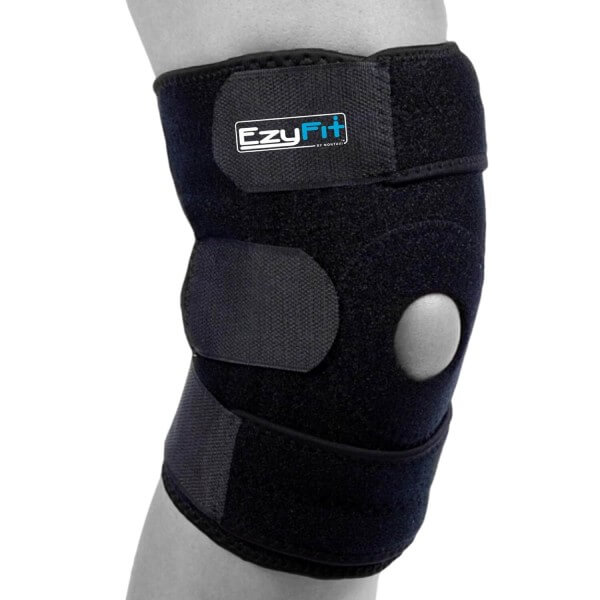
Our team of certified personal trainers and professional athletes has reviewed 36 knee braces and narrowed it down to 9 best ones.
Our evaluations were based on 8 key factors, and we’ve spent a total of 390 hours testing most of the products out and examining hundreds of online user reviews. Our list is updated regularly, so you’re welcome to share your experiences in the comments section.
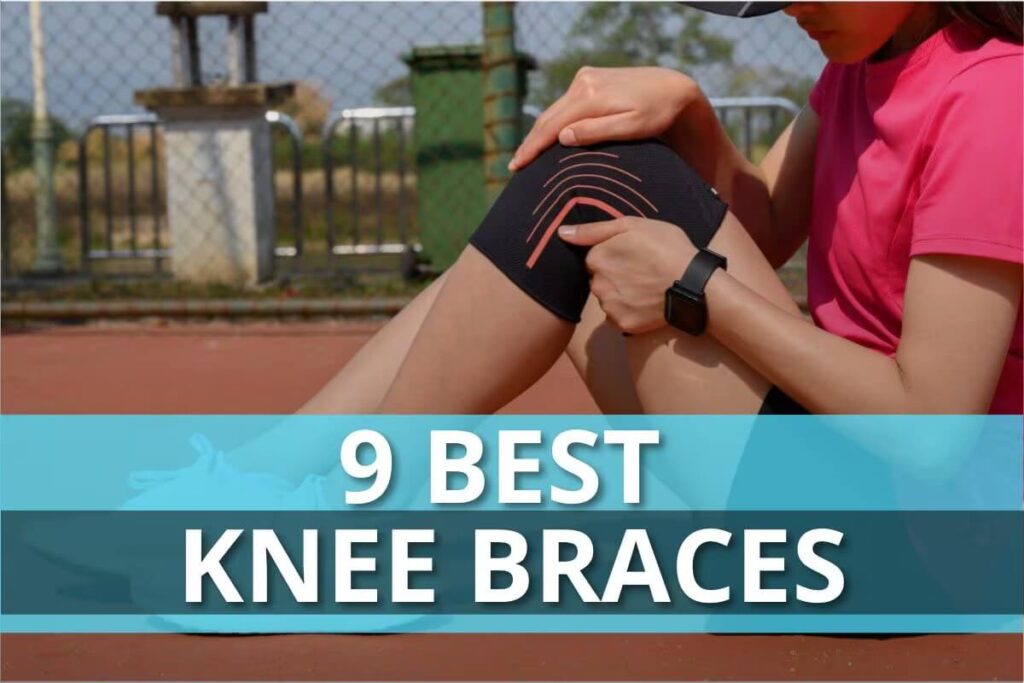
Top 9 Best Knee Braces Reviewed
- EzyFit Knee Brace – Top Pick
- NEENCA Professional Knee Brace – Runner-Up
- DR. BRACE ELITE Knee Brace – Best Knee Support for Walking
- NEENCA Compression Knee Sleeve – Best for Working Out
- JIUFENTIAN Copper Knee Sleeve – Compression Sleeve for Working Out (Alternative Choice)
- Bodyprox Knee Brace – Best Flexible Knee Brace
- Nvorliy Hinged Orthopedic Knee Brace – For Post Operation Recovery
- Orthomen OA Underloader Knee Brace – Best Orthopedic Knee Brace
- Bodyprox Patella Tendon Knee Strap – Knee Strap (Alternative Option)
| Product | Total | Support and Comfort | Compression | Stability | Adjustability | Flexibility | Material Quality | Breathability |
|---|---|---|---|---|---|---|---|---|
| EzyFit | 68 | 10 | 9.5 | 10 | 9.5 | 9.5 | 10 | 9.5 |
| NEENCA Knee Brace | 67.5 | 10 | 9.5 | 10 | 10 | 9 | 10 | 9 |
| Dr. Brace Elite | 67 | 9.5 | 9.5 | 10 | 9.5 | 9.5 | 9.5 | 9.5 |
| NEENCA Knee Sleeve | 67 | 9.5 | 10 | 10 | 9 | 9.5 | 9.5 | 9.5 |
| Juifentain | 66.5 | 9.5 | 10 | 10 | 9 | 9.5 | 9.5 | 9 |
| Bodypro Knee Brace | 65.5 | 9.5 | 9 | 10 | 9 | 10 | 9 | 9 |
| Nvorliy | 64 | 9 | 8.5 | 10 | 9.5 | 9 | 9 | 9 |
| Orthomen | 64 | 9 | 8 | 10 | 9.5 | 9 | 9.5 | 9 |
| Bodypro Knee Strap | 63 | 8 | 8 | 9 | 9 | 10 | 9 | 10 |
1. EzyFit Knee Brace
- Item Dimensions: 9” L x 6.5” W (Product)
- Item Weight: 5.6 lbs (Product)
- Item Thickness: 3.5 mm
- Sizing: Medium (10”-14”), Large (14”-17”), Extra Large (16”-24”)
- Material: Neoprene
- Closure Type: Velcro strap
- Best used for: ACL and MCL injuries, Meniscus tears, Arthritis, Pain relief, Tendonitis
- Gel Cushioning: No
- Additional Features: Open patella area, Anti-slip bidirectional strap system
EzyFit provides a wide range of support aids, including knee braces and waist trainers. Their brand motto is “Be active the Ezy way” by using their quality sports support aids.
The EzyFit knee brace provides three things: comfort, support, and versatility. It’s our best knee brace pick for a few main reasons.
Made from 3.5mm neoprene with a blend of polyester and nylon, it’s super comfortable to wear with great flexibility and breathability. This makes it well-suited to sports and movements that require extra support without too much movement restriction.
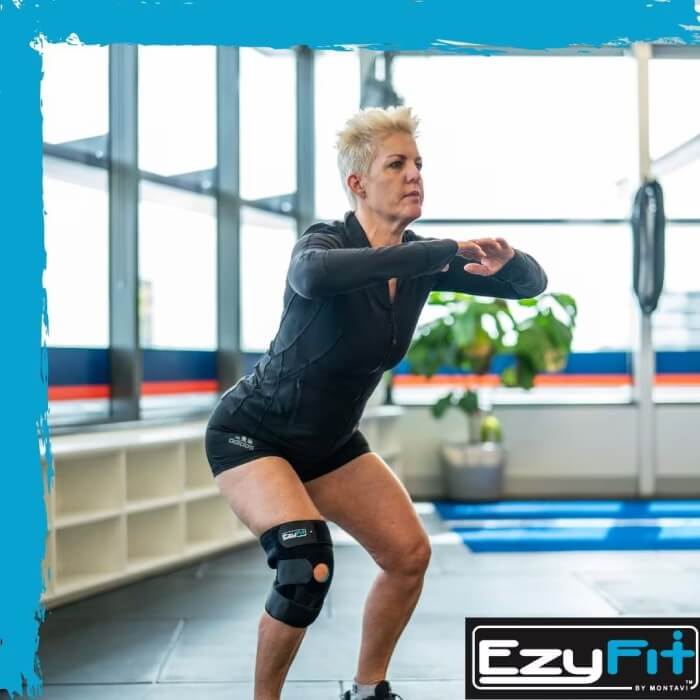
It combines two velcro closures with non-slip silicone gel lines that keep the brace from shifting up and down as you move. The reinforced double stitching adds durability with the double-stitched curved brace edges.
A great thing about the EzyFit brace is the open patella design which provides full movement of the knee joint without taking away any support. Combined with the side stabilizers, the EzyFit brace provides good lateral and medial support when moving.
EzyFit offers three knee brace sizes from medium (10”) to X-large (24”). While this should be enough for most user leg sizes, it’s a smaller size range than most of our other knee braces offer, which is something to bear in mind when choosing the right size.
The EzyFit knee brace is a great wrap-and-go option to assist with recovery, work around common knee injuries, and provide general support without restricting movement. It’s our best knee brace for sports and rehabilitation.
Positives:
Could be better:
2. NEENCA Professional Knee Brace
- Item Dimensions: 12.3” L x 5.9” W (Package), Item Weight: 1.1 lbs (Package)
- Sizing: Small (17.1”-18.5”), Medium (18.5”-19.7”), Large (19.7”-20.5”), X-large (20.5”-22.1”), XX-large (22.1”-22.8”), XXX-large (22.8”-24”), XXXX-large (24”-25.6”)
- Material: Polyester, Nylon
- Closure Type: Adjustable velcro straps
- Best used for: Knee pain, Surgery recovery, Sports injuries, ACL, MCL, PCL tears
- Gel Cushioning: Yes
- Additional Features: Open patella front and back design, Dual side hinged copper stabilizers, Ventilation holes, Memory foam lining
NEENCA provides high-quality, valuable support products that help with knee pain. Their product range has been designed and tested in America.
The NEENCA Professional Knee Brace is our runner-up knee brace, offering excellent support and adjustability with removable copper side stabilizers and adjustable velcro closure straps at the top and bottom.
In terms of knee support, the NEENCA brace features an anatomically contoured patella gel pad that surrounds and supports the knee cap. The copper side stabilizers provide lateral knee support by reducing pressure on the knee joint and can be removed if you’re looking for more movement freedom.
This makes the knee brace a great option to use throughout the rehabilitation process as your knee joint becomes stronger and requires less support.
The open patella front and back design helps to relieve pressure without taking support away from the joint itself. The knee brace features breathable holes throughout the fabric, allowing moisture to escape, with the inner memory foam lining responding to the shape and structure of your knee joint for a snug fit.
To keep the brace secure, adjustable velcro straps sit at the top and bottom of the brace. NEENCA offers size options from small (17.1”) to XXXX-large (25.6”), which should be suitable for all user leg sizes.
The NEENCA Professional Knee Brace is a fully adjustable knee brace with customizable knee support. It’s our runner-up knee brace option coming a close second behind the more comfortable EzyFit knee brace.
Positives:
Could be better:
3. DR. BRACE ELITE Knee Brace
- Type of a bag: All-purpose
- Item Dimensions: 8.7” L x 3.2” W (Package)
- Item Weight: 0.55 lbs (Package)
- Sizing: Small (10.2”-13.4”), Medium (13.4”-18.5”), Large (18.5”-21.5”), X-large (21.5”-23”), XX-large (23”-25”)
- Material: High-elastic fabric blend (Neoprene, Nylon, Polyester, Spandex, Silicone)
- Closure Type: Velcro straps
- Best used for: Patella injuries, Meniscus tears, Hypertension, Arthritis, Minor ligament damage
- Gel Cushioning: Yes
- Additional Features: Double side stabilizers, Anti-slip system, Breathable fabric
DR. BRACE ELITE provides lightweight, supportive knee products that offer stability and excellent customer satisfaction.
Dr. BRACE ELITE manufactures lightweight supportive knee braces, with the one we’ve reviewed below weighing just 0.55 pounds.
This makes it a great option for activities such as walking where you need added knee support without feeling like the brace is weighing you down slightly as you move. It’s our best knee brace for women or men who enjoy walking.
What we particularly like about this knee brace is the balance between comfort and support. It’s made from a lightweight fabric blend consisting of neoprene, nylon, and polyester for comfort and breathability with spandex for some flexibility as you walk around.
In terms of support, the patella gel pad around the open knee design and side stabilizers provide lateral and medial stability without taking away from movement.
To keep the brace secure as you move, DR. BRACE ELITE has designed it with non-slip silicone strips and large adjustable velcro straps at the top and bottom.
Sizes range from small (10.2”) to xx-large (25”), which should give you enough suitable options to choose from. A nice added touch is the seven color options, allowing you to pick your favorite or customize with your sporting outfit if you wish.
The DR. BRACE ELITE is comfortable, lightweight, and provides lateral and medial knee support. It sits firmly around the knee joint and comes in seven color options.
Positives:
Could be better:
4. NEENCA Compression Knee Sleeve
- Item Dimensions: 14.29” L x 7.76” W (Package)
- Item Weight: 6.3 lbs (Package)
- Sizing: X-small (10.2”-13.1”), Small (13.3”-15.7”), Medium (15.7”-17.7”), Large (17.7”-19.3”), X-large (19.3”-21.3”), XX-large (21.3”-22.8”), XXX-large (22.8”-25.6”)
- Material: Silicone, Neoprene
- Closure Type: Pull on
- Best used for: Muscle strains, ACL, MCL, PCL injuries, Ligament injuries, Meniscus tears, Swelling and inflammation
- Gel Cushioning: Yes
- Additional Features: Metal spring stabilizers, Horizontal knit technology, Medical anti-slip silicone strips
The NEENCA Compression sleeve works by applying targeted compression to your knee joint to improve circulation and reduce pain. It’s made from air-knit neoprene fabric that uses horizontal knit technology to keep heat in whilst allowing your skin to breathe.
It uses a pull-on design with medical anti-slip strips built-in to the inner lining. On both sides of the sleeve, the metal spring stabilizers are stitched in to provide lateral support and move alongside the sleeve fabric. At the front, the sleeve features a closed knee cap design, with an anatomically contoured patella gel pad to provide medial support.
NEENCA offers the sleeves in sizes from small (10.2”) to XXX-large (25.6”). They also give you 11 color options and offer free features if you’re not 100% satisfied with your purchase.
The NEENCA compression sleeve offers functional support and performance improvements with cleverly stitched medial and lateral support. It sits nicely against the skin without shifting during activity.
Positives:
Could be better:
5. JIUFENTIAN Copper Knee Sleeve
- Item Dimensions: 13.82” L x 9.76” W (Package)
- Item Weight: 5.3 lbs (Package)
- Sizing: Small (13”-14.1”), Medium (14.1”-15.5”), Large (15.5”-17”), X-large (17”-18.3”), XX-large (18.3”-20”), XXX-large (20”-22.5”), XXXX-large (22.5”-24”), XXXXX-large (24”-27.5”)
- Material: Copper infused nylon
- Closure Type: Pullover + adjustable Velcro strap
- Best used for: Compression support, Arthritis, Ligament support, Muscle swelling and inflammation
- Gel Cushioning: No
- Additional Features: Copper infused material, Non-slip silicone grip, 3D weaving technology
Jiufentian offers a decent range of copper-infused knee braces that provide support and compression for different activities.
The JIUFENTIAN offers an alternative sleeve choice for working out, using a unique copper-infused nylon blend to provide support and compression. Unlike the NEENCA sleeve, this one comes with an adjustable Velcro strap allowing you to customize the fit slightly more and improve the likelihood of the sleeve staying in place.
One thing that could be improved is the lack of patella gel padding to provide medical support around the knee joint. This isn’t necessarily always needed depending on the support you’re looking for but it’s something to bear in mind when choosing.
Both ends of the sleeves feature non-slip silicone grip material that helps to limit sleeve movement when used alongside the adjustable strap. The armpit fabric used is both breathable and comfortable, allowing moisture to escape when exercising.
JUIFENTIAN offers a huge size range from small (13”) to 5XL (27,5”), which would seem to be very large if you don’t read the size guide. The stated sizes are quite small, meaning you may need one size up compared to other knee sleeve brands.
Overall, the JUIFENTIAN knee sleeve is another great option for working out, providing compression and comfort by using a copper-infused nylon blend with an adjustable strap support.
Positives:
Could be better:
6. Bodyprox Knee Brace
- Item Dimensions: 9.53” L x 5” W (Package)
- Item Weight: 8.82 lbs (Package)
- Sizing: One Size (14”-21.5”), XL (21.5”-26”)
- Material: Neoprene blend (63% SBR, 32% Nylon, 5% spandex)
- Closure Type: Pullover + Velcro straps
- Best used for: ACL, MCL, LCL injuries, Meniscus tears, Sprains and strains, Arthritis, Tendonitis pain
- Gel Cushioning: Yes
- Additional Features:Flexible stabilizing springs, Silicone gel straps, Patella gel pad
Bodyprox doesn’t believe that living with pre-existing conditions or injuries should define the way you live your life. They aim to help improve mobility and get you back on your feet.
The Bodyprox knee brace is made using a neoprene blend consisting of SBR, nylon, and spandex to offer excellent flexibility. This allows the brace to breathe and provide compression whilst responding well to the movement of the knee joint without losing its shape.
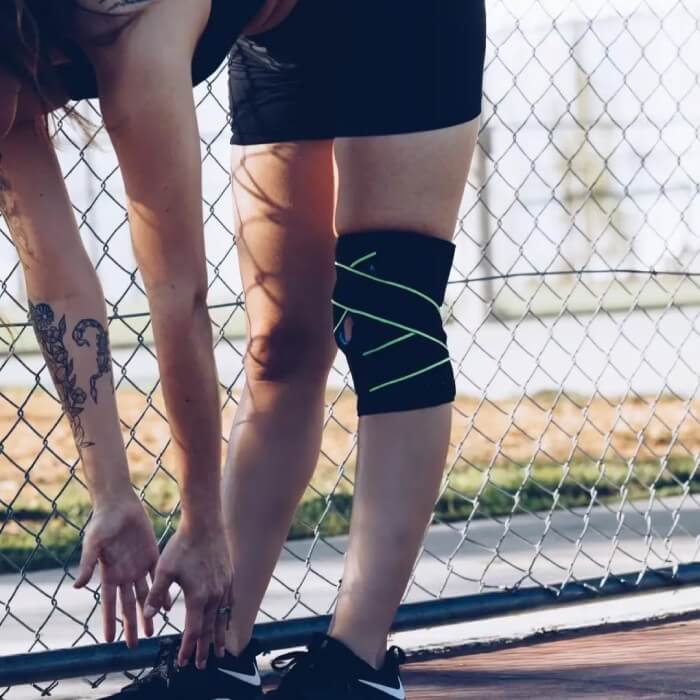
In terms of support, a gel pad sits around the knee cap, with an open patella design to keep the knee cap stable whilst still allowing flexion and extension. At the sides, flexible stabilizing springs are stitched into the brace to provide lateral support without limiting movement.
Silicone gel lines at the top of the brace prevent it from moving around whilst a pair of cleverly designed bi-directional straps wrap around the top and bottom of the knee cap area to provide added support and keep the brace in place. Bodyprox offers two sizes: one-size-fits-all (14”-21.5”) and X-large (21.5”-26”).
What’s great about the Bodyprox knee brace is the amount of flexibility offered for such a supportive brace. The placement of the straps working alongside the patella gel pad is a clever design feature, which is what gave the Bodyprox brace.
Positives:
Could be better:
7. Nvorliy Hinged Orthopedic Knee Brace
- Item Dimensions: 14.8” L x 10.2” W (Package)
- Item Weight: 1.8 lbs (Package)
- Sizing: Small (<17”), Regular (17.”-18.5”), Large (18.5”-21”), X-large (21.”-22.5”), XX-large (22.5”-24”), XXX-large (24”-25.5”)
- Material: Neoprene, Nylon
- Closure Type: Velcro straps
- Best used for: Arthritis, Post-surgery recovery, ACL, PCL injuries, Meniscus tears
- Gel Cushioning: No
- Additional Features: With and without a shoulder strap, Adjustable flexion and extension hinge, Open patella hole, High-strength metal hinge bracket
Nvorliy is dedicated to providing supportive rehabilitation equipment that uses innovative design features. They are confident that you’ll be impressed when purchasing.
The Nvorliy Orthopedic Knee Brace offers a fully-adjustable design, with removable hinges and velcro fastening straps that can be moved to where you need them.
The locking dials provide excellent control, allowing you to adjust the knee range of motion from -10 to 120 degrees, depending on the amount of movement you can safely perform. It’s our top pick for the best knee brace for pain when recovering from major surgery.
As the brace is designed for postoperative recovery, the high-strength hinges on either side provide excellent lateral support and stability when the knee joint is in a fragile state. The brace is made from a neoprene and nylon blend, which wicks moisture well as you go through the rehabilitation process.
Being fully adjustable means the brace can be used throughout the whole rehabilitation process, from immediately post-surgery to when full functionality has recovered. Nvorliy offers the brace from small (<17”) to XXX-large (25.5”) with or without a shoulder strap for added support.
Overall, the Nvorliy Orthopedic Knee Brace offers excellent support that can be changed accordingly throughout the rehabilitation process.
Positives:
Could be better:
8. Orthomen OA Underloader Knee Brace
- Item Dimensions: 15.9” L x 6.67” W (Package)
- Item Weight: 1.9 pounds (Package)
- Sizing: One size (up to 32”)
- Material: Condyle padding, Plastic brace supports
- Closure Type: Adjustable velcro straps
- Best used for: Reducing knee pressure, Medial and lateral chronic knee instability, Rheumatoid arthritis, Osteoarthritis
- Gel Cushioning: No
- Additional Features: Adjustable dual knee extension and flexion sliders, Inner padding, Quick release buckles
Orthomen provides orthopedic knee braces and supports, with a dedication to product innovation and growth.
The Orthomen OA Unloader Brace is a lightweight and comfortable unloader brace with three points to reduce pressure on the knee joint and surrounding areas. It’s specially designed for debilitating conditions such as osteoarthritis, where more support is needed to improve quality of life.
The brace uses an adjustable side hinge, which helps with valgus/varus correction adjustments by changing the amount of pressure applied to the knee joint. Flexion/extension stops can be inserted into the side hinge to limit the range of motion depending on your requirements.
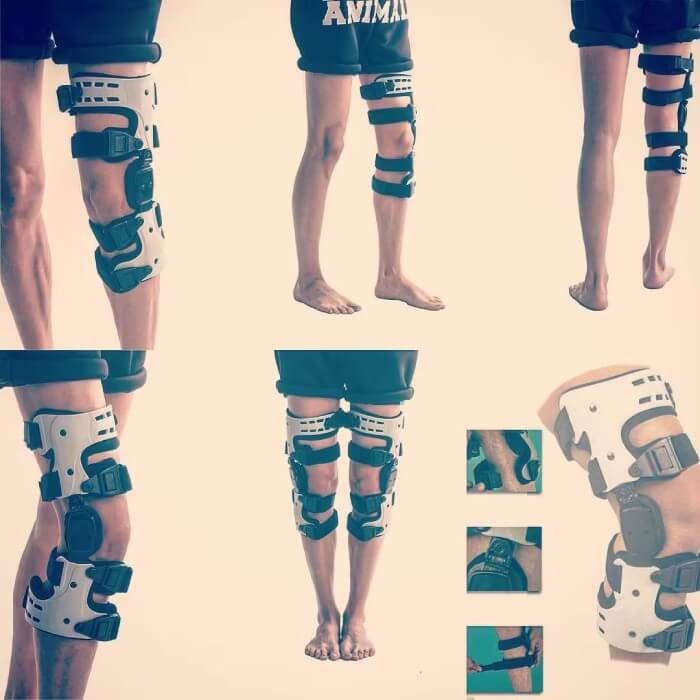
Despite the use of plastic bracing supports, the brace sits comfortably against the skin using the condyle padding throughout. The use of silicone grip liners stops the brace from moving around unnecessarily.
At both sides of the knee joint, the plastic support braces can be adjusted using the straps and quickly released using the plastic buckles. The Orthomen OA Knee Brace comes in one size (up to 32”), with each leg brace needing to be purchased separately.
The Orthomen OA Unloader Brace uses an adjustable side hinge to provide lateral support, with velcro straps and quick release buckles to change the brace fit. Flexion/ extension stops can be inserted to limit range of motion.
Positives:
Could be better:
9. Bodyprox Patella Tendon Knee Strap
- Item Dimensions: 5.4” L x 4.6” W (Package)
- Item Weight: 3.2 lbs (Package)
- Sizing: One size
- Material: Silicone gel padding, Neoprene strap
- Closure Type: Adjustable velcro straps
- Best used for: Bursitis, Arthritis, Knee support, Pain relief, Patella tendon injuries
- Gel Cushioning: No
- Additional Features: Hexagonal venting holes, Hook and loop fasteners
The Bodyprox Patella Tendon Knee strap is our alternative knee support option, specifically designed for the treatment of patellofemoral conditions causing knee pain and stiffness under the patella. It can offer excellent pain relief without feeling overly bulky or restrictive.
The built-in silicone gel padding provides support for high-impact movements in sports such as football and tennis, where the knee joint needs to flex and absorb impact when moving around. The neoprene material is comfortable against the skin, with the hexagonal venting holes preventing moisture build-up on the skin as you exercise.
The adjustable strap wraps around the knee joint and secures using a velcro closure mechanism. The brand states that it can fit up to 18” leg sizes with a one-size-fits-all option.
The Bodyprox knee strap provides an alternative knee support option for those who prefer something more small and simple. The smaller design offers less compression compared to knee braces but offers decent support at the front of the knee.
Positives:
Could be better:
Experts Who Contributed To This Article
Olympian with 21 years of Oly Lifting experience
20 years of Oly Lifting & Training experience
M.Sc.Eng. Biotechnology, Sports Nutritionist

What Are Knee Braces?
Knee braces come in different shapes and sizes with various functional uses. A common feature between all types is that they help to support the knee and take pressure off the joint and surrounding muscles.
A knee brace is typically a medical device that stabilizes the knee, providing support and protection. Different braces provide varying levels of support and restrict certain movement patterns when worn around the knee joint.
Types of Knee Braces
With different knee injuries and issues causing varying levels of discomfort and movement restriction, multiple types of orthopedic knee braces are designed to prevent, heal, and manage the pain and mobility issues. Learn about the different knee brace types first before choosing a suitable type with the help of a medical professional.
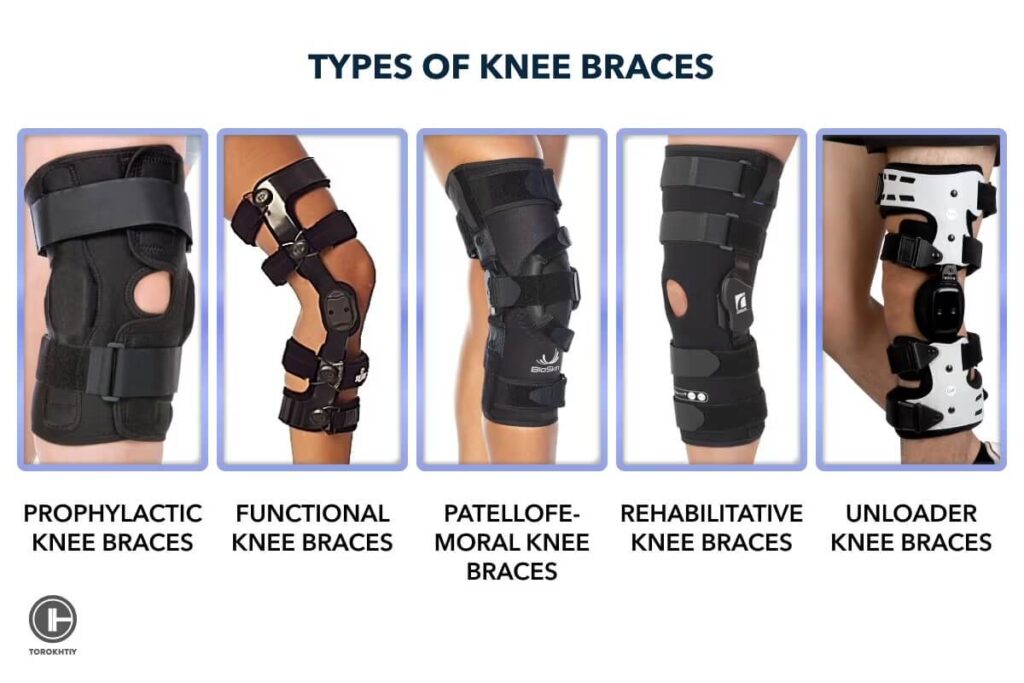
1. Prophylactic Knee Braces
The main function of prophylactic knee braces is to protect the knee joint from ligament damage. They are most commonly used to prevent or reduce the severity of ligament damage injuries seen in high-contact sports, such as football and rugby.
Some studies show that the effectiveness of the brace may depend on the type of movement performed which is something to consider when choosing a suitable brace.
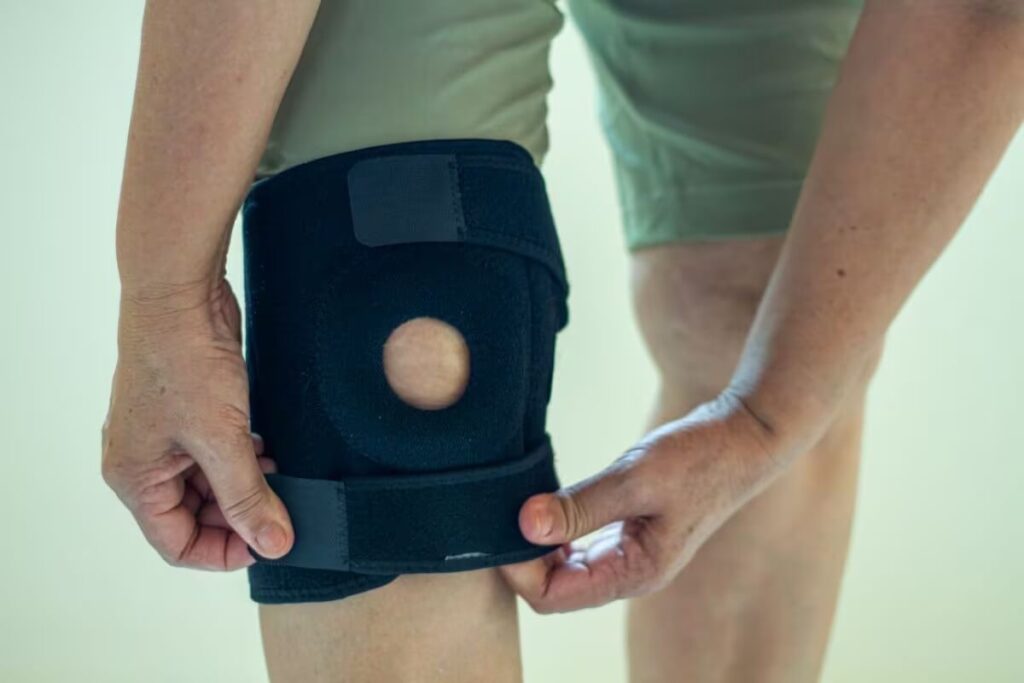
Prophylactic knee braces help protect the medial collateral ligament (MCL) and protect the knee joint from getting injured again. They can be used by athletes performing high-contact sports or those who have suffered previous MCL injuries and may have applications for osteoarthritis.
However, prophylactic knee braces should be used with caution as supportive evidence into the benefits of long term use is lacking and there is potential of weakening the muscles in the long term.
2. Functional Knee Braces
Functional knee braces provide support to the knee joint following an injury such as an anterior cruciate ligament (ACL) tear. They are flexible knee braces that are widely used for a range of injuries, offering support whilst allowing functional movement to still take place.
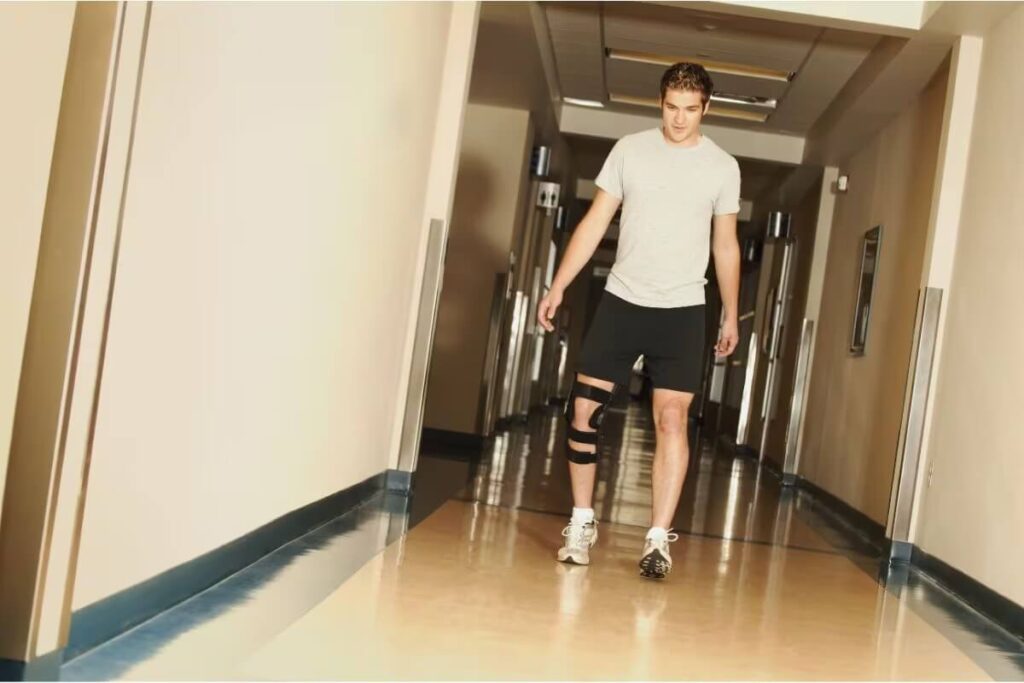
They are effective in helping you return to functional activity by providing stability and support whilst not being overly restrictive.
Our expert Jacek Szymanowski commented further:
"I’ve used a custom CTI knee brace after my knee injury and ACL tear among a few other tissues damaged. I used it specifically during water sports, hard enduro, and kickboxing to make sure I wouldn't compromise the rehab process. This allows me to do what I love without the constant fear about my long knee rehab. Full rehab is now done, and I’ve never used it again. 🙂 Occasionally I wear my knee sleeves for grappling and BJJ to avoid patella tendon irritation. My advice: if you’re planning to train and participate in sports during the rehab process, don’t compromise — choose the best and most comfortable option!"
3. Patellofemoral Knee Braces
These are low-profile, lightweight braces that apply compressive forces around the patella and knee joint. They are typically used to offer support and compression or offer pain management for conditions related to patellofemoral pain syndrome (also known as runner’s knee).
Common in those who regularly run or play sports involving a lot of running and jumping, symptoms include knee pain when walking up and down stairs or sitting for long periods.
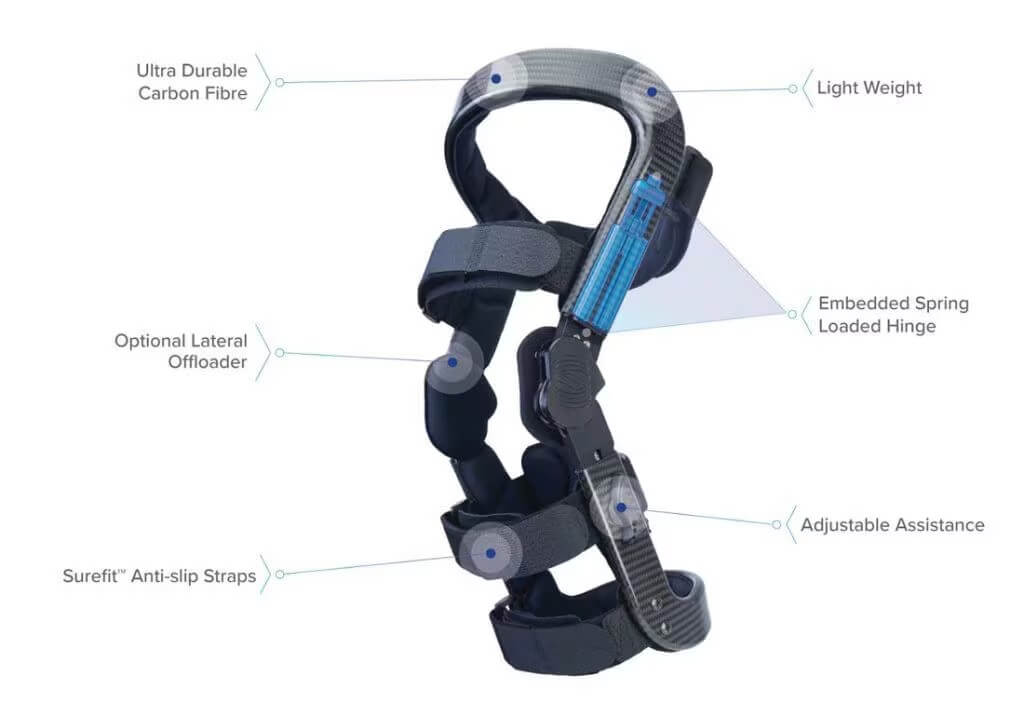
4. Rehabilitative Knee Braces
Similar to functional knee braces, rehabilitative knee braces help protect and support the knee joint following injury or surgery. Rehabilitative knee braces help to improve knee mobility and movement whilst the joint is allowed to heal.
Patients using a rehabilitative knee brace may benefit from improved recovery time and reductions in pain by reducing associated movement patterns.
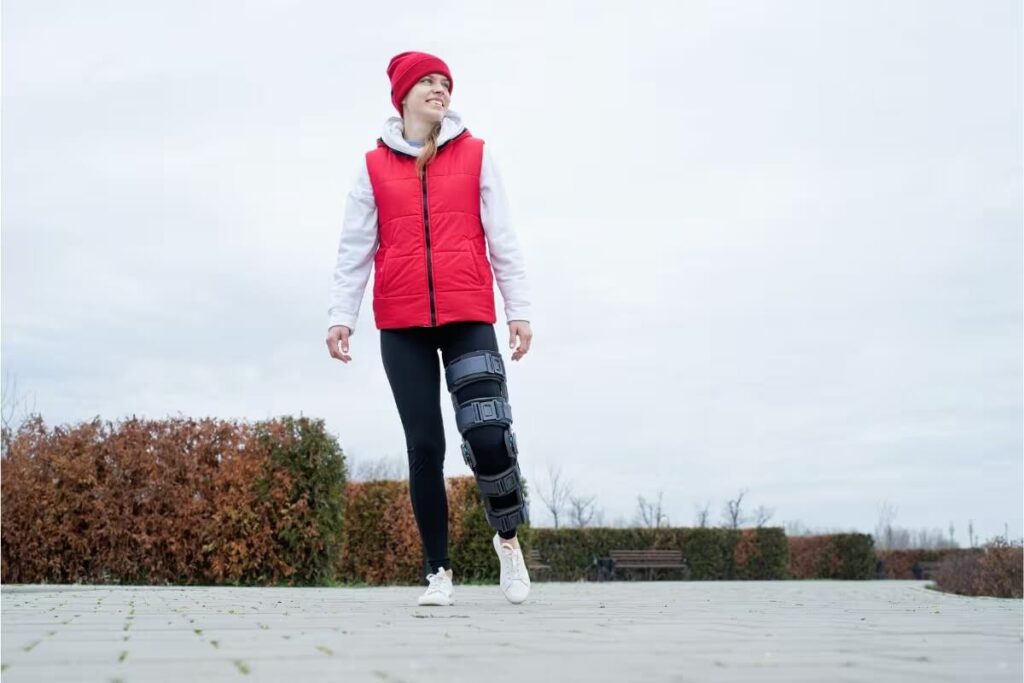
5. Unloader Knee Braces
Unloader knee braces help redistribute weight from the knee joint, reducing pressure and helping provide pain relief. They are commonly used for people with osteoarthritis, which is more common in older age. They may also prove useful for those who are looking for an alternative non-surgical option to improve their quality of life.
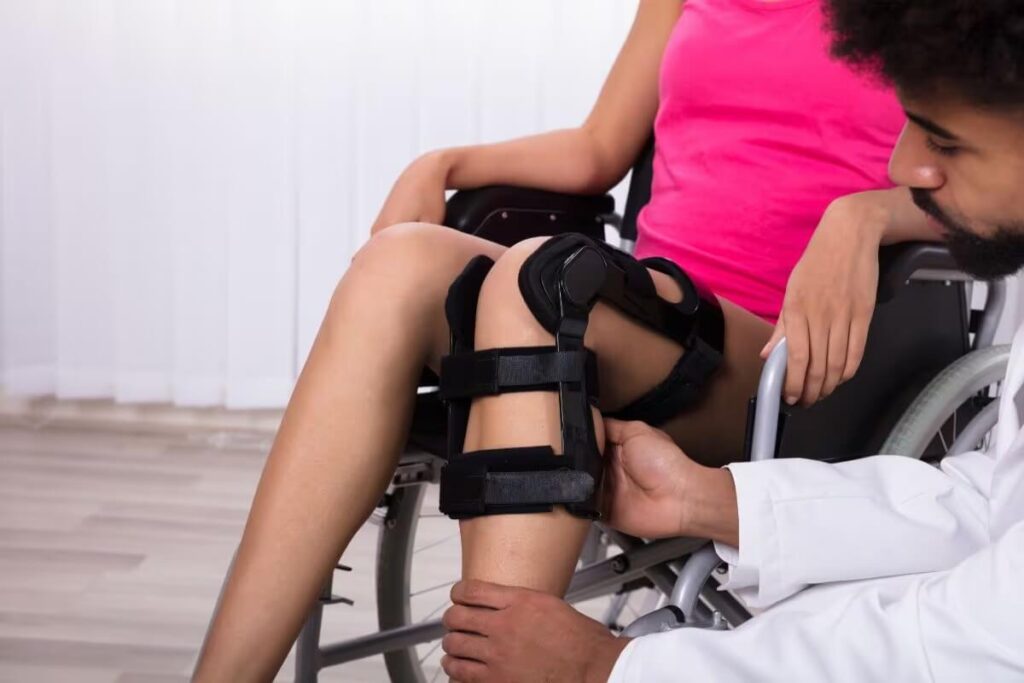
Unloader knee braces may be useful for patients who are experiencing pain on one side of the knee as it allows pressure to be redistributed. The use of an unloader brace should be considered after consultation with a healthcare professional.
| Knee Brace | Applications |
|---|---|
| Prophylactic | Ligament damage MCL injuries Contact/ non-contact sport where rapid movement takes place |
| Functional | Add extra support for ACL injuries following surgery Medial collateral ligament damage (MCL) Lateral collateral ligament damage (LCL) |
| Patellofemoral | Patellofemoral pain syndrome High-impact movements Offer compression and support for pain management |
| Rehabilitative | Post surgery recovery Rehabilitation exercise aids Anterior cruciate ligament (ACL) Posterior cruciate ligament (PCL) Medial collateral ligament damage (MCL) |
| Unloader | Knee pain on one side Osteoarthritis Relief pressure on one side of the knee May improve mobility and walking pattern |
What Do Knee Braces Do?
Knee braces have several benefits and functional uses which depend mainly on the type and design. Consider the function you need the knee brace to perform before choosing a suitable option.
1. Injury Prevention
Wearing a compressive knee brace during sporting events and/or for daily activities requiring a large amount of movement and contact may protect from injuries or prevent previous ones from reoccurring.
Knee braces can help to keep the knee joint injury-free by stopping it from moving outside of the normal range of motion when changing direction or during impact.
If you’re recovering from a previous injury, a knee brace allows you to continue with the sport or activity without increasing the risk of injury. Prophylactic knee braces may help to reduce injuries during contact sports and would be the most suitable type for injury prevention.
However, over-reliance may weaken the muscles around the knee and therefore increase the risk of injury. Correct use should be based on the advice of a professional.
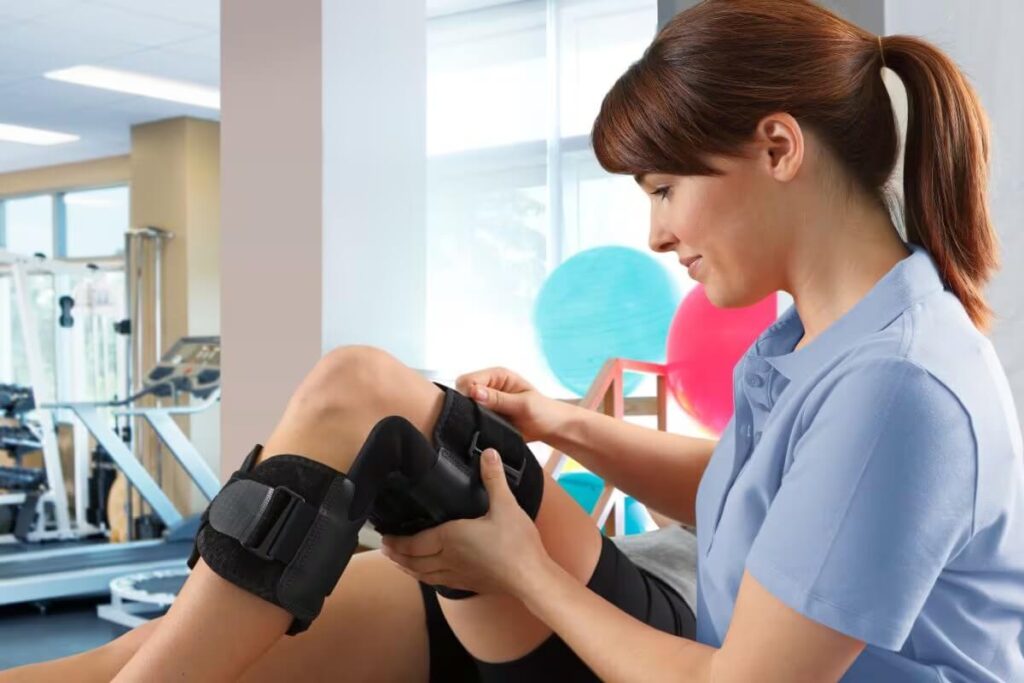
2. Compression
Compressive knee sleeves work by tightly wrapping around the knee joint and surrounding areas. Compressing these areas improves blood flow and nutrient delivery, which helps to decrease pain, reduce inflammation, and improve proprioception.
Compressive knee sleeves can be used for high-impact performance sports such as weightlifting and running as they may help to reduce pain and excessive load and promote recovery.
Knee sleeves tend to offer more movement compared to knee braces making them better suited for certain sports and activities that require more movement.
Building on this point, our expert Oleksiy Torokhity added:
"Yes, I use an athletic knee brace in my training. Its main task is to keep my knee joint warm and help with my performance. Sometimes I even add warming ointments to enhance the desired effect"
3. Support
All types of knee braces and sleeves offer stability and support to the knee joint and surrounding muscles. Different types offer varying levels of support and movement which is why it's important to choose the right one.
4. Pain Relief
Wearing a knee brace can provide pain relief and comfort for certain conditions, such as osteoarthritis, or when experiencing chronic pain from a previous injury.
Although a knee stabilizer brace won't cure the cause of the pain, providing pain relief may help improve overall comfort and quality of life whilst you work on solving the underlying issue
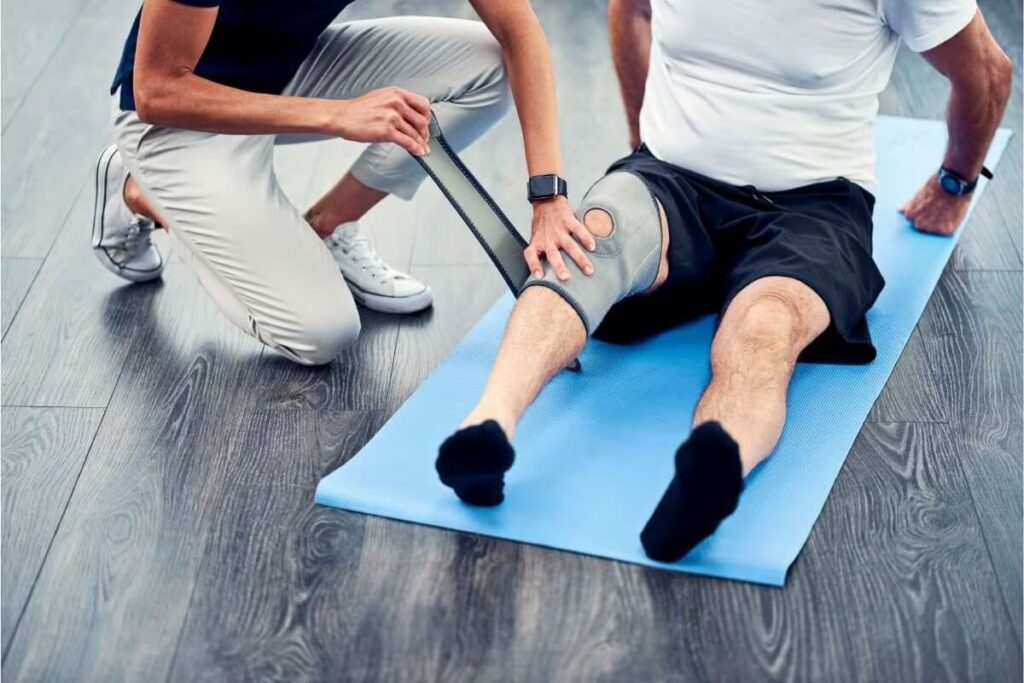
5. Recovery
During the recovery phase from minor or major knee injuries, it's important to keep the knee joint in the correct position and reduce the amount of bending and straightening whilst the healing process takes place.
Wearing a knee brace for working out and rehabilitation exercises can improve confidence, recovery time, and prevent further damage from taking place by reducing pressure on the knee.
When Should You Use a Knee Brace?
Knee braces are worn to provide stability and support when additional help is needed. Specific situations warrant the use of different knee brace types more than others and should be considered first when deciding how often and when to use one.
Situations that may benefit from the use of a knee brace include:
- Injury Recovery: ACL and PCL ruptures, ligament tears, and meniscus injuries warrant the use of knee braces to provide support, reduce pain, and promote recovery. It can help the knee joint to heal and either help with or restrict movement depending on the specific injury.
- Pain Management: Osteoarthritis is a common degenerative joint disease that’s more common in older populations. Wearing a knee brace may help to relieve pressure on the surrounding areas and help with mobility.
- Sporting Events: Wearing a compression sleeve or prophylactic knee brace during high-contact and/or performance sports, such as football and weightlifting, can help to provide additional support and improve performance.
- General Movement and Stability: For those with mobility issues or weaker knee joints, wearing a knee brace at certain points in the day may help to improve movement and quality of life. However, note that long term effects of use are still not clearly established.
| Knee Brace Application | Relevant Situations |
|---|---|
| Injury/Disease | Osteoarthritis ACL, MCL, PCL tears Ligament damage Meniscus issues Bursitis Arthritis Sprains and strains Muscle swelling and inflammation |
| Performance/ High-contact sports | Weightlifting Running Triathlon Football Rugby Racket Sports Basketball |
| Pain Management | Minor surgery Major surgery Surrounding limb pain Patellofemoral pain Osteoarthritis pain |
| Quality of Life | Mobility issues Lack of independence Confidence General well-being |
1. When Shouldn’t You Use a Knee Brace?
It’s important to note that a knee brace should be used only in specific situations that warrant it. Here's when not to use one:
- When sitting or sleeping (general times when your body is at full rest and not moving at all - 24 hour use may be warranted in certain situations following surgery if total movement restriction is needed).
- When you have arthritis but your movement isn't impaired and you don't feel any pain.
- When performing low-impact, non-weight bearing activities such as swimming, stretching, and yoga.
- If the knee brace is a bad fit or you experience harsh skin irritation when wearing one.
- In any situation that doesn’t require extra knee support
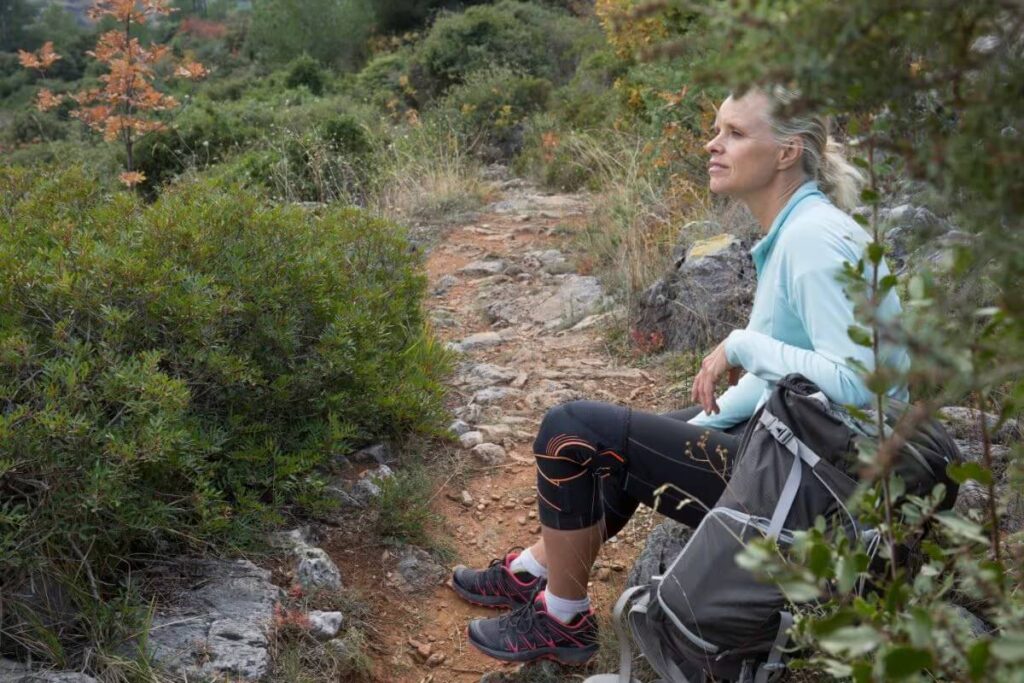
2. Possible Downsides of Using a Knee Brace
Wearing a knee brace for too long may be counterproductive. That's why it's important to consult with a professional first, who will be able to help with the type of brace needed and how to use it.
Possible limitations are important to consider, which may include the following:
- Over-reliance when worn if not required: Muscle atrophy may be seen if appropriate strength training isn't performed when wearing the brace. Decreased stability may also be seen which can reduce joint functionality.
- Doesn’t address the underlying cause of knee pain/ instability: Knee braces should be used as an aid and are not designed to replace a proper rehabilitation plan.
- May be uncomfortable when worn for extended periods.
- Regular maintenance and cleaning may be needed for some types of brace so they continue to function normally.
- May be expensive and not covered by insurance
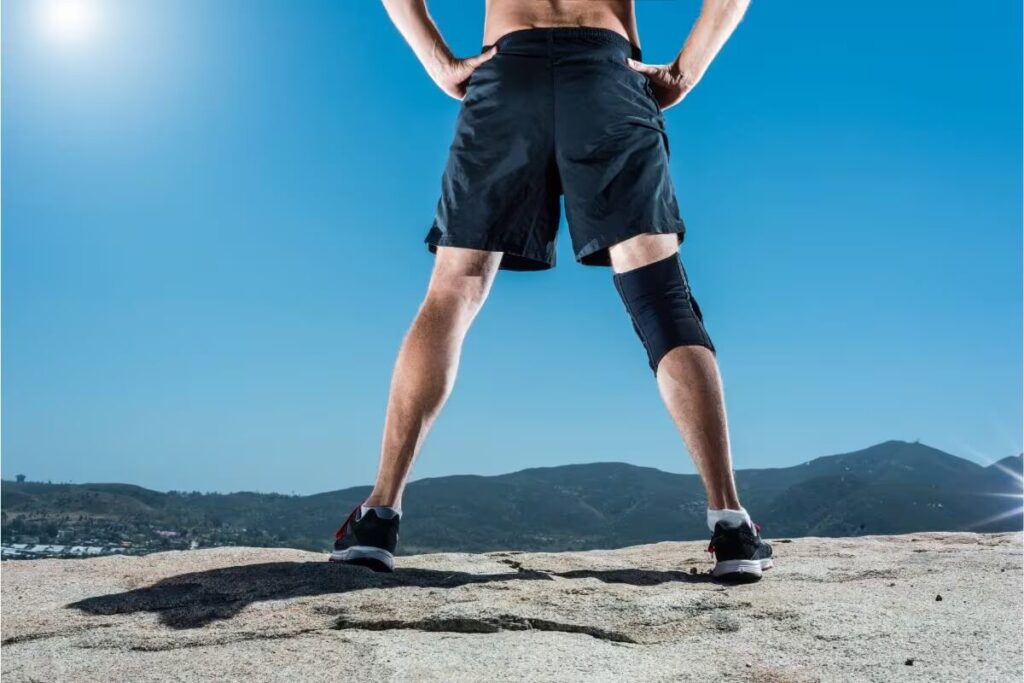
Things to Consider When Choosing a Knee Brace
When deciding our picks, we consulted with our in-house experts to come up with what we felt were the most important factors to consider when choosing. We paid particular attention to the injury type, compiling a list of knee support braces and sleeves that help to address a wide range of needs.
1. Injury Type
The first thing you need to consider when choosing a suitable knee brace is the type of injury and what you need the knee brace to achieve. As we’ve mentioned above, different types of knee braces offer varying levels of support and movement.
When dealing with arthritis, compression and unloader braces may help to reduce joint pressure during weight-bearing movements. Recovering from surgery after an ACL tear may require the use of a functional brace.
General performance sports are best suited to the use of a compression brace whilst rigid recovery braces limit movement and help recover from surgery. We’ve gone into more detail about this above in the “types of knee brace” section.
Assess the injury type with the help of a doctor and choose a brace based on the professional advice given.
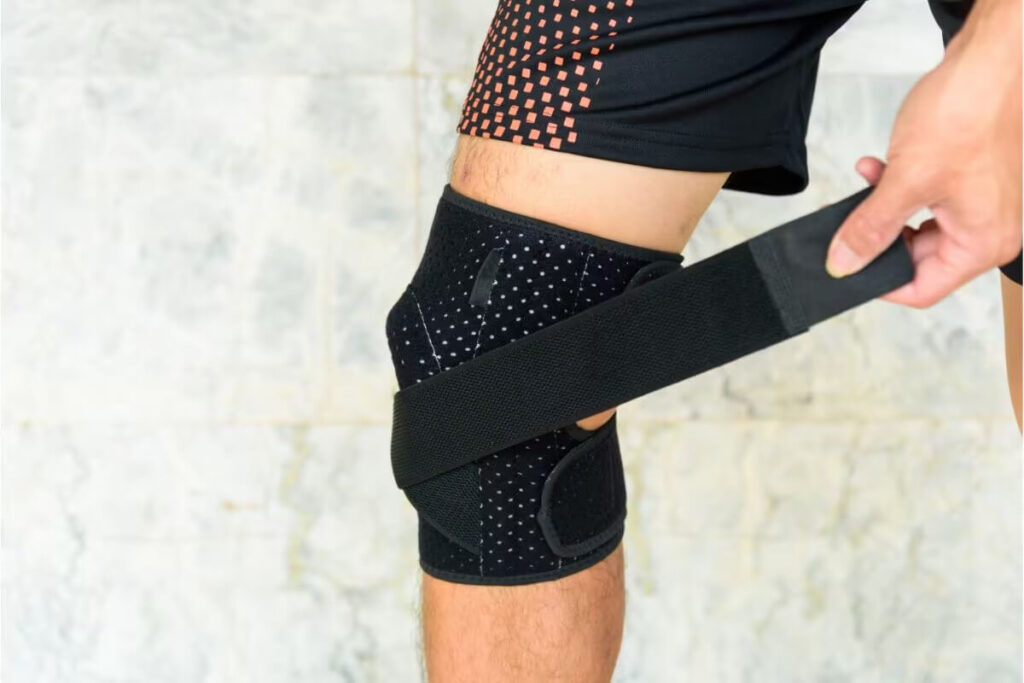
2. Support and Stability
Once you’ve worked out the type of brace needed, consider the amount of support and stability you want. Think about the movements you’re performing that require the use of a knee brace. If you have pain on one side of the knee, an unloader knee brace might be the best option.
As the amount of support and stability goes up, the degree of movement offered is likely to go down. If you need a knee brace for gym movements, a compressive knee sleeve is most likely the best option. Consult with a healthcare provider during this process to find the most suitable type of brace.
3. Adjustability
Adjustability is an important but often overlooked factor when determining the most suitable brace. If the brace isn’t tight enough, it won't perform the function it's designed to. A brace that is too tight against the skin may cause irritation and be uncomfortable to wear which may then limit performance or cause other issues.
A brace that can handle changes in leg size when recovering from injury can be more useful than a brace that will need to be replaced after a certain amount of time if the leg size change is present.
Consider the flexibility of the brace material and the range of adjustment options when purchasing.To avoid size changes once purchased, consult a physiotherapist to help with the measuring and fitting process.
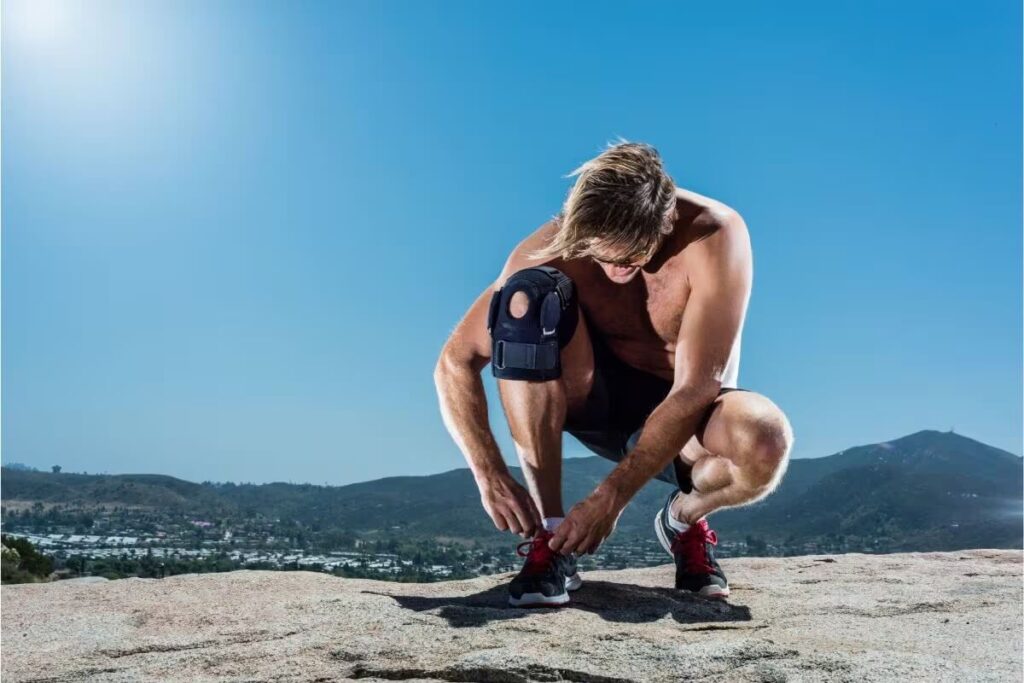
4. Material and Comfort
Most fitness knee braces are made from lightweight, breathable neoprene material with moisture-wicking and insulating properties. Other common materials used include spandex, and nylon. Hard plastics and polyethylene may be used for added support in areas of the brace.
Consider the level of comfort you want and try to familiarize yourself with the different materials first. Some people may have adverse reactions to neoprene and therefore require a different material. The hard plastic and polyethylene supports can be hard on the skin, meaning added padding is often needed, which most good braces should feature.
How to Use a Knee Brace?
Getting the proper fit when using a knee brace is crucial to its overall effectiveness. Here’s how to use them correctly:
- Consult a healthcare professional first who will assess your injury and help you choose the right type of knee brace. They should also measure knee circumference and recommend an appropriate brace size.
- Adjust the straps or fastening devices if required to loosen or tighten the brace until you achieve the desired fit. The brace should provide additional support and stability without feeling overly uncomfortable to wear. At first, it may feel a little strange and take some getting used to.
- Once fitted, check your range of motion according to your rehabilitation plan, sports event, or general requirements. Ensure the brace functions normally for what you need without it moving around or causing pain. Monitor the fit accordingly.
- Follow up with a healthcare professional when required to check for any adjustments and changes needed to the type of brace of adjustment mechanism
- Perform any routine maintenance to the fastening mechanisms and clean the material when needed.
Tips From the Champ
When wearing knee compression sleeves for lifting, you want to make sure they are tight enough to provide compression without restricting movement too much and becoming uncomfortable. Adjust the straps or fit and make a note of the configuration so you’re able to use the same fit every time!
Olympic Weightlifting Champion
Knee Brace Alternatives
Despite the popularity and use of knee braces, alternatives exist for those who find them too uncomfortable and restrictive. Some people may also simply prefer alternative devices and find them to be a more suitable treatment aid.
Knee Sleeves - These go around the knee joint and surrounding muscles to provide compression to help reduce pain, decrease inflammation, and improve proprioception.
Patella Braces - This is a sleeve or brace worn around the knee to help treat patella conditions. Unlike knee sleeves and braces, it is much smaller and provides more specific support.
On this point, Sergiy Putsov added commented:
"In my training experience, I’ve found it best to use knee sleeves during heavy squat sessions. Also, I put them on my shins during all of my pulling exercises to protect my shins from aggressive knurling"
1. Compression Garments
Compression garments are pieces of clothing that fit tightly around the skin to provide added support to muscles and surrounding joints. They are commonly used for cycling, running, and triathlons.
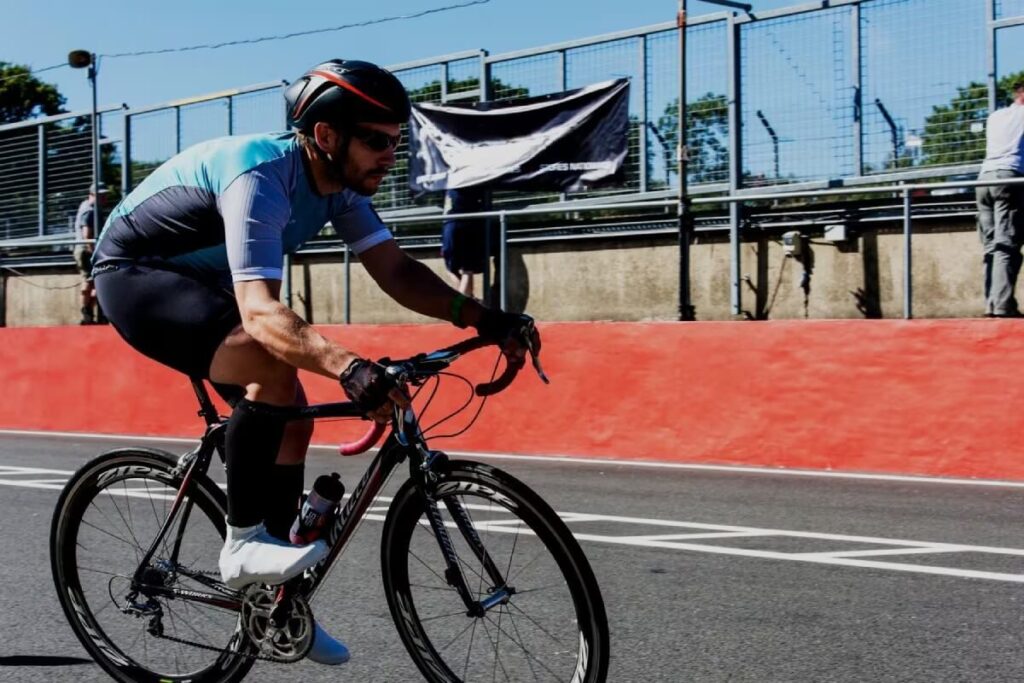
2. Kinesiology Tape
This involves wrapping the knee joint with medical tape to limit unwanted movement and provide support. The tape needs to be reapplied after each activity bout, which may become cumbersome.
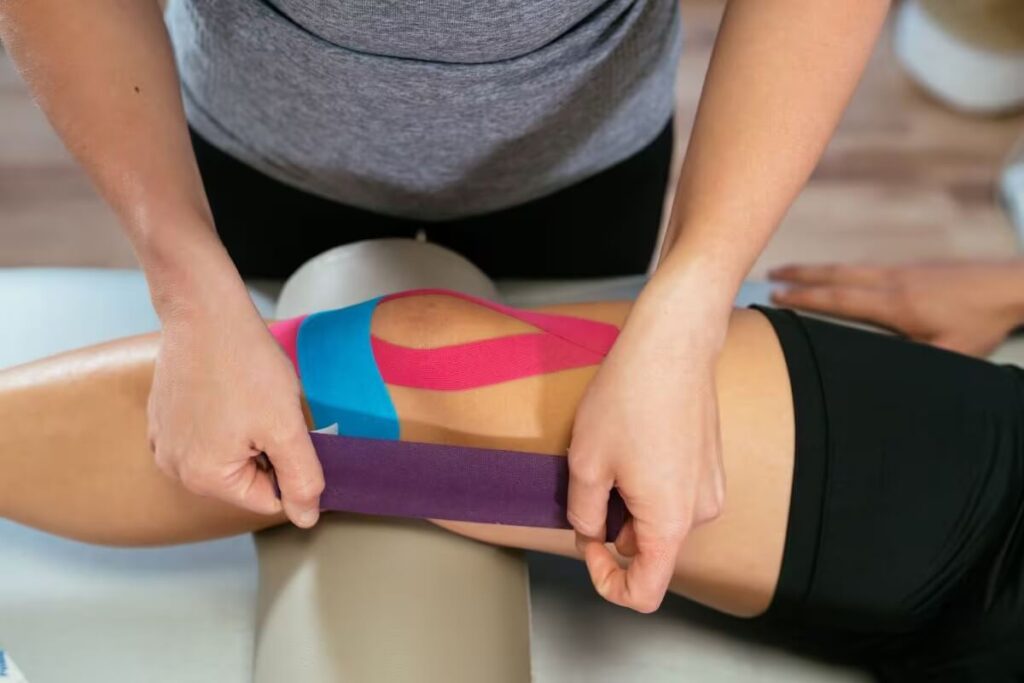
FAQ
Do Knee Braces Really Work?
Yes, definitely! Knee braces work by providing support, stability, and compression to the knee joint and surrounding areas. However, it's important to choose the right knee brace for your injury to get the intended effect.
Is a Knee Strap or Knee Brace Better?
A knee strap is designed to help with patellofemoral pain and mild aches under the knee whilst braces deal with more severe pain where more support is needed. In terms of which one is better, both work well but should be used for different injuries. The better option depends on the injury as discussed above.
Is It Okay to Wear a Knee Brace Everyday?
The correct amount of usage depends on the severity of the injury and daily lifestyle habits. Some knee braces may need to be worn all the time and tapered down as the injury improves, while others may be used for certain situations such as sporting events and high-impact exercise as a workout knee brace.
Note that it’s important to consult with your doctor to develop a suitable treatment plan.
Conclusion
Knee braces provide support and stability to the knee joint as a rehabilitation aid, pain management tool, and performance enhancer. Different types feature varying levels of support and movement freedom which informs their most suitable uses.
The EzyFit Knee Brace is our top pick option, providing multifunctional knee support for a range of knee injuries and sporting events. It's comfortable to wear, easy to use, and provides decent lateral support when needed.
Before using a suitable knee brace, consult a healthcare professional and physiotherapist to make the best decision. Bear in mind that the use of a knee brace shouldn’t replace a proper rehabilitation plan and should be used alongside as an aid.
Have you worn a knee brace before? What type have you used and why? Share your experiences below!
References:
- Bernard P. Kemker 3rd, Roma Kankaria, Nirav Patel, Gregory Golladay, “Hip And Knee Bracing: Categorization, Treatment Algorithm, And Systematic Review,” JJAAOS Global Research & Reviews 5, no. 6 (2021):e20.00181-12, doi:10.5435/JAAOSGlobal-D-20-00181
- Bhaveen H. Kapadia, Jeffrey J. Cherian, Roland Starr, Morad Chughtai, Michael A. Mont, Stephen F. Harwin, Anil Bhave, “Gait Using Pneumatic Brace For End-Stage Knee Osteoarthritis,” The Journal of Knee Surgery 29, no.3 (2016): 218-223, doi:10.1055/s-0036-1579790
- Blake M. Bodendorfer, Nicolas R. Arnold, Henry T. Shu, Emily V. Leary, James L. Cook, Aaron D. Gray, Trent M. Guess, Seth L Sherman, “Do Neoprene Sleeves And Prophylactic Knee Braces Affect Neuromuscular Control And Cutting Agility?” Physical Therapy in Sport 39, (2019): 23-31. doi:10.1016/j.ptsp.2019.05.007
- Chetan Gohal, Ajaykumar Shanmugaraj, Patrick Tate, Nolan S. Horner, Asheesh Bedi, Anthony Adili, Moin Kahn, “Effectiveness of Valgus Offloading Knee Braces in the Treatment of Medial Compartment Knee Osteoarthritis: A Systematic Review,” Sports Health 10, no. 6 (2010): 500-514, doi:10.1177/1941738118763913
- Christopher M. Powers, Samuel R. Ward, Li D. Chan, Yu J. Chen, Michael R. Terk, “The Effect of Bracing on Patella Alignment and Patellofemoral Joint Contact Area,” Medicine and Science in Sports and Exercise 36, no. 7 (2004): 1226-1232, doi:10.1249/01.mss.0000132376.50984.27
- D. Giotis, N. K. Paschos, F. Zampeli, E. Pappas, G. Mitsionis, A. D. Georgoulis, “Bracing Can Partially Limit Tibial Rotation During Stressful Activities After Anterior Crucial Ligament Reconstruction with a Hamstring Graft,” Orthopedics and Traumatology: Surgery and Research 102, no. 5 (2016): 601-606, doi:10.1016/j.otsr.2016.04.005
- Eun H. Choi, Keon K. Kim, Ah Y. Jun, Eun H. Choi, Sung W. Choi, Ka Y. Shin, “Effects of the Off-Loading Brace on the Activation of Femoral Muscles – A Preliminary Study,” Annals of Rehabilitation Medicine 35, no.6 (2011): 887-896, doi:10.5535/arm.2011.35.6.887
- Francesco M. Uboldi, Paola Ferrua, Daniele Tradati, Pietro Zedde, Jim Richards, Andrea Manunta, Massimo Berutto, “Use of an Elastomeric Knee Brace in Patellofemoral Pain Syndrome: Short-Term Results,” Joints 6, no.2 (2018): 85-89, doi:10.1055/s-0038-1661339
- Jacobo Zamporri, Arnel Aguinaldo, “The Effects Of A Compression Garment On Lower Body Kinematics And Kinetics During A Drop Vertical Jump In Female Collegiate Athletes,” Orthopedic Journal of Sports Medicine 6, no.8 (2018), doi:10.1177/2325967118789955
- 10. Jim Hewlett, John Kenney, “Innovations in Functional and Rehabilitative Knee Bracing,” Annals of Translational Medicine 7, suppl 7 (2013): S248, doi:10.21037/atm.2019.03.34
- Hjortur F. Hjartarson, Soren Toksvig-Larsen, “The Clinical Effect of an Unloader Brace on Patients with Osteoarthritis of the Knee, a Randomized Placebo Controlled Trial with One Year Follow Up,” BMC Musculoskeletal Disorders 19, no. 1 (2018), doi:10.1186/s12891-018-2256-7
- Huda Alfatafta, David Onchonga, Mahmoud Alfatafta, Lu Zhang, Imre Boncz, Szimonetta Lohner, Balint Molics, “Effect of Using Knee Valgus Brace on Pain and Activity Level Over Different Time Intervals among Patients with Medial Knee OA: Systematic Review,” BMC Musculoskeletal Disorders 22, no.1 (2021): 687, doi:10.1186/s12891-021-04513-0
- Laura C. Dickerson, Alexander T. Peebles, Joseph T. Moskal, Thomas K. Miller, Robin M. Queen, “Physical Performance Improves With Time and a Functional Knee Brace in Athletes After ACL Reconstruction,” Orthopedic Journal of Sports Medicine 8, no.8 (2020), doi:10.1177/2325967120944255
- Lucie Brosseau, K A. Yonge, Vivian Welsh, S Marchand, Maria Judd, George A. Wells, Peter Tugwell, “Thermotherapy For Treatment Of Osteoarthritis,” Cochrane Database System Review 2003, no.4 (2003). doi:10.1002/14651858.CD004522
- Nadatul A. Sharif, Siew-li Goh, Juliana Usman, Wan Kamarul Wan Safwani, “Biomechanical and functional efficacy of knee sleeves: A literature review,” Physical Therapy in Sport 28 (2017): 44-52, doi:10.1016/j.ptsp.2017.05.001
- Patrick W. Cawley, Paul E. France, Lonnie E. Paulos, “Comparison of Rehabilitative Knee Braces. A Biomechanical Investigation,” American Journal of Sports Medicine 17, no. 2 (1989): 141-146, doi:10.1177/036354658901700201
- Richard Ma, Chirag Sheth, Blake Fenkell, Abdul F. Buyuk, “The Role of Bracing in ACL Injuries: The Current Evidentiary State of Play,” Journal of Knee Surgery 35, no. 3 (2022): 255-265, doi:10.1055/s-0042-1742304
- Scott A. Paluska, Douglas B. McKeag, “Knee Braces: Current Evidence and Clinical Recommendations for Their Use,” American Family Physician 61, no. 2 (2000): 411-424, PMID: 10670507
- Scott W. Cheatham, Russel T. Baker, Thomas E. Abdenour, “Kinesiology Tape: A Descriptive Survey of Healthcare Professionals in the United States,” International Journal of Sports and Physical Therapy 16, no.3 (2021): 778-796. doi:10.26603/001c.22136
- Stephan P. Hacker, Florian Schall, Frank Niemeyer, Nicolas Wol , Anita Ignatius, Lutz Dürselen, “Do Prophylactic Knee Braces Protect the Knee Against Impacts or Tibial Moments? An In Vitro Multisensory Study,” Orthopedic Journal of Sports Medicine 6, no.11 (2018), doi:10.1177/2325967118805399
- Soheil Najibi, John P. Albright, “The Use of Knee Braces, Part 1: Prophylactic Knee Braces in Contact Sports,” American Journal of Sports Medicine 33, no.4 (2005): 602-611, doi:10.1177/0363546505275128
- Tariq A. Kwaees, Jim Richards, Gill Rawlinson, Charalambos P. Charalambous, Ambreen Chohan, “Can the Use of Proprioceptive Knee Braces Have Implications in the Management of Osteoarthritic Knees: An Exploratory Study,” Prosthetics and Orthotics International 43, no. 2 (2019): 140-147, doi:10.1177/0309364618796852
- Thierry P. C. Franke, Frank J. G Backx, Bionka M. A. Huisstede, “Lower Extremity Compression Garments Use By Athletes: Why, How Often, And Perceived Benefit,” BMC Sports Science, Medicine and Rehabilitation 13, no.1 (2021), doi:10.1186/s13102-020-00230-8
- Tyler Welch, Thomas Keller, Ruben Maldonado, Melodie Metzger, Karen Mohr, Ronald Kvitne, “The Effect of a Dynamic PCL Brace on Patellofemoral Compartment Pressures in Pcl-And Pcl/Plc-Deficient Knees,” Journal of Experimental Orthopedics 4, no.1 (2017), doi:10.1186/s40634-017-0085-5
Why Trust Us?
With over 20 years in Olympic Weightlifting, our team does its best to provide the audience with ultimate support and meet the needs and requirements of advanced athletes and professional lifters, as well as people who strive to open new opportunities and develop their physical capabilities with us.
All products we select are primarily approved and tested by the Olympic Weightlifting Champion Oleksii Torokhtiy. Under his guidance, we provide honest and reasonable assessments of the products we review by checking their characteristics, packaging, design, comfort and durability features, and general product rating. We select products from only high-quality and trusted sports brands, thus vouching for their quality.
The product testing process is described in more detail here
Author: Ihor Shymechko
Pro Olympic Weightlifter, Coach
Best Results: Snatch – 208 kg,
C&J – 240 kg
Ihor has been a professional weightlifter since 1996, boasting over two decades of competition experience. His notable achievements include clinching the European Championship in 2009 and securing a silver medal in the 105kg division at the Senior World Championships in 2011. Ihor represented his country in the 2008, 2012, and 2016 Summer Olympics. After retiring from competitive weightlifting, he transitioned to coaching, leveraging his vast experience to guide athletes who now compete on both national and international stages.
Reviewed by: Oleksiy Torokhtiy
Olympic Weightlifting Champion
Best Results: Snatch – 200 kg,
C&J – 240 kg
Oleksiy Torokhtiy is a professional athlete boasting 20 years of experience in Olympic weightlifting. With multiple European and World titles under his belt, he has showcased his prowess in two Olympic Games (Beijing 2008 and London 2012). Upon concluding his illustrious career, Oleksiy dedicated himself to coaching. By 2022, he had conducted over 200 weightlifting seminars worldwide. He is the visionary behind an international sportswear and accessories brand known for its motto, “Warm Body Cold Mind.” Additionally, he is an esteemed author and the creator of a series of training programs and eBooks.
If you have any questions/suggestions/any other inquiries considering product reviews, you can reach out to us via email – [email protected]
